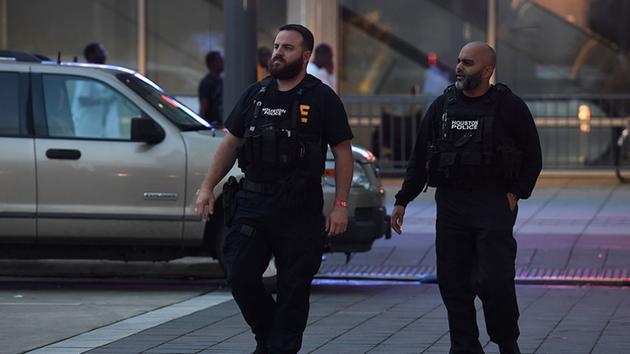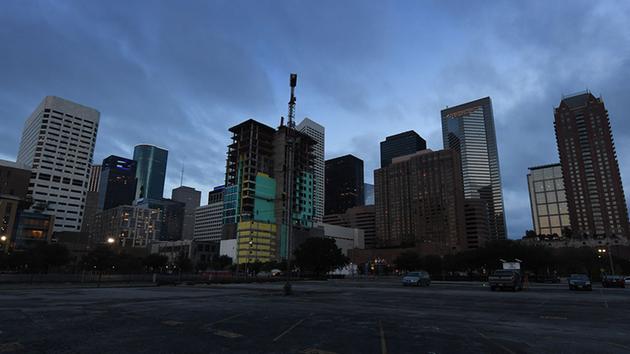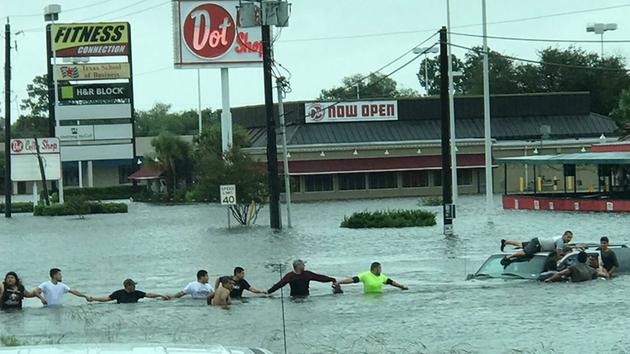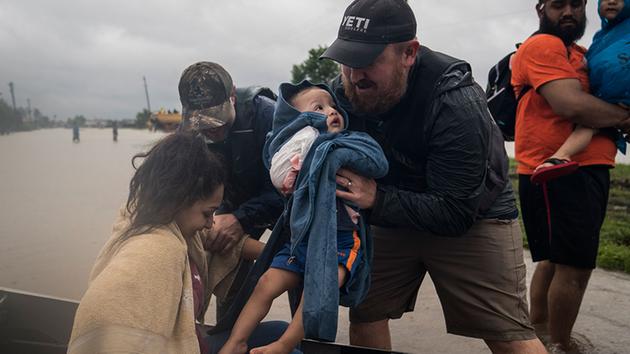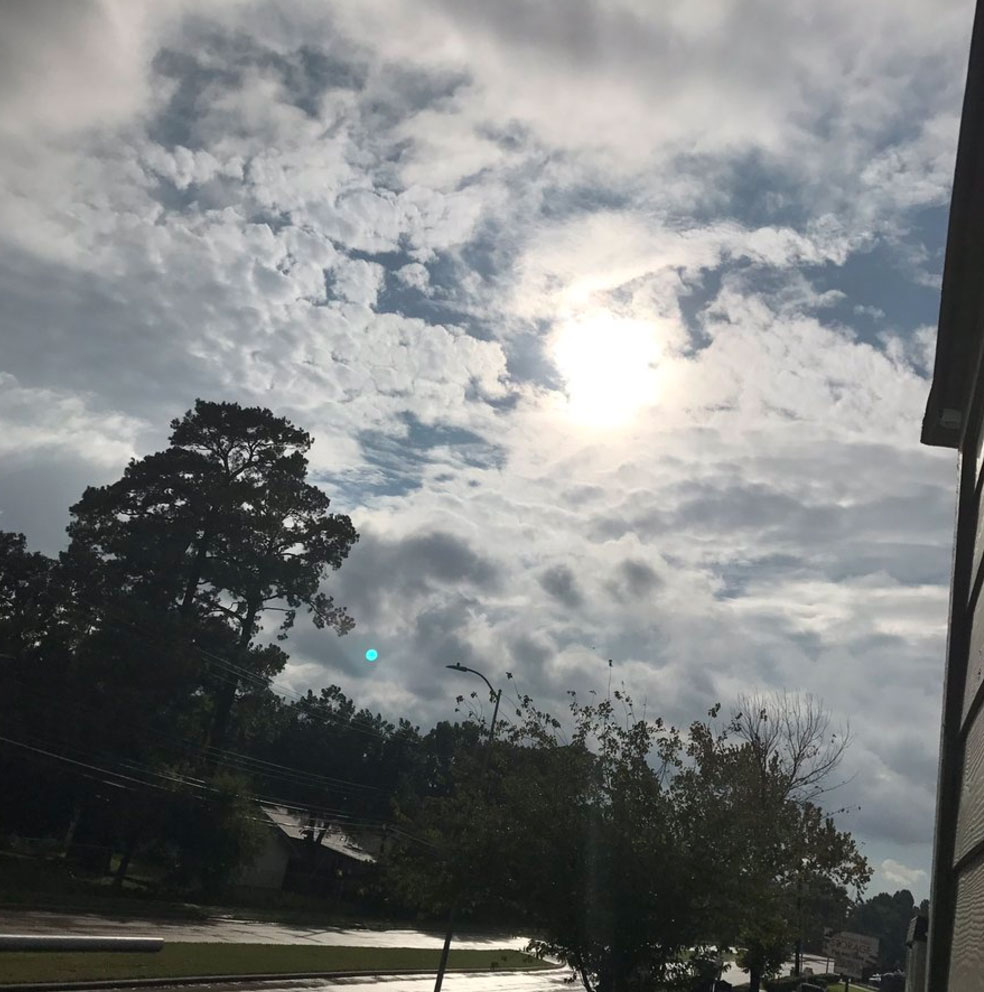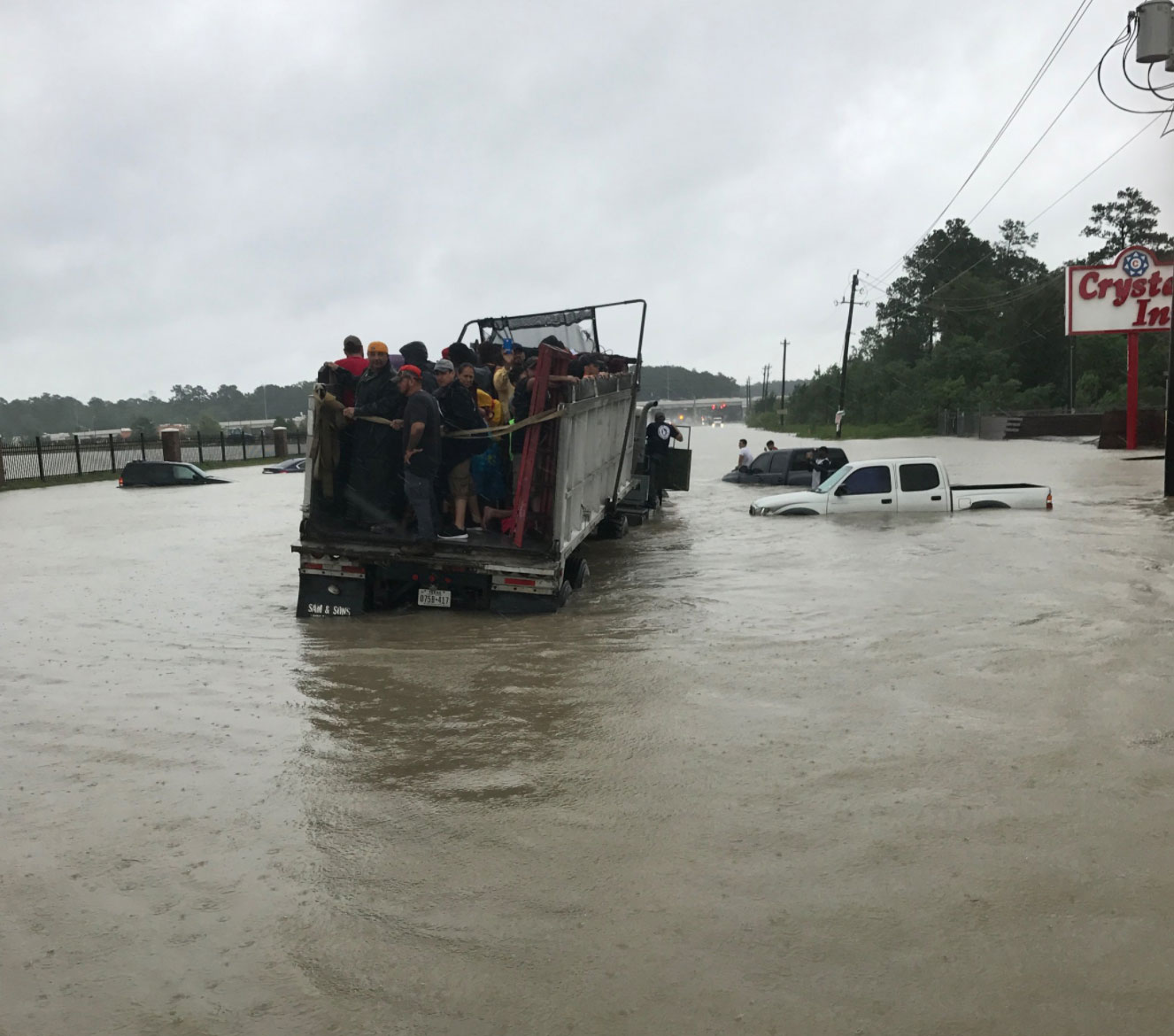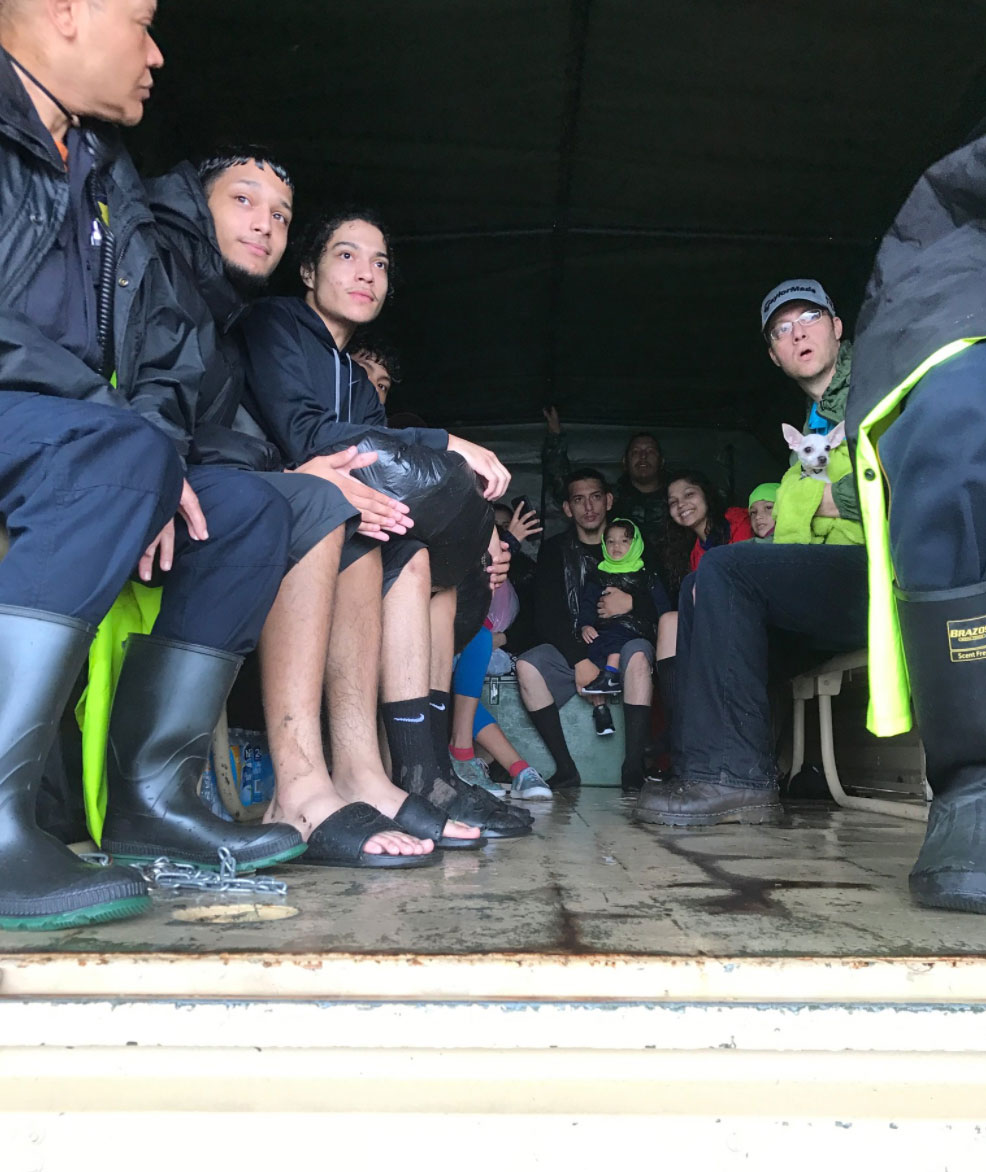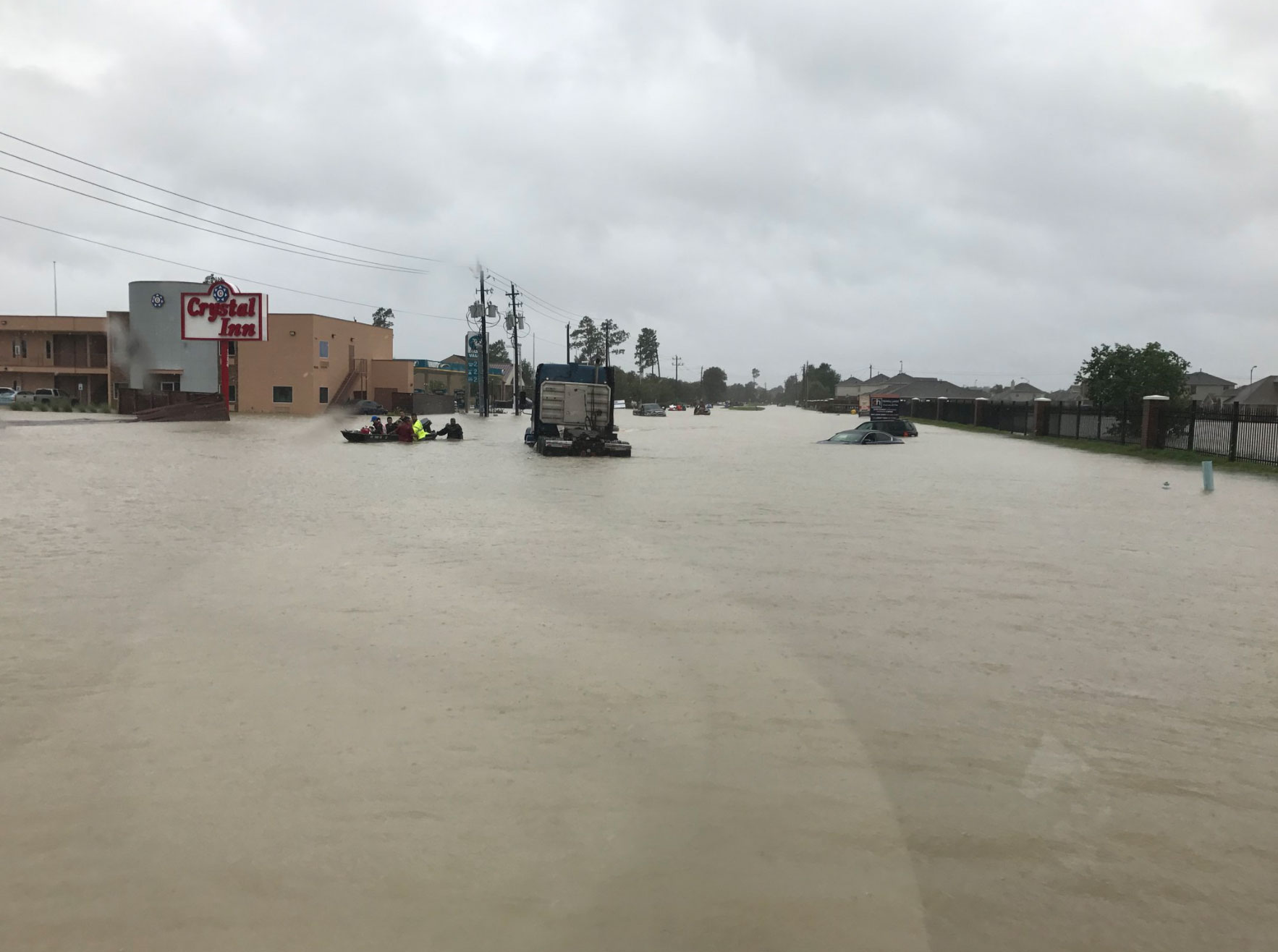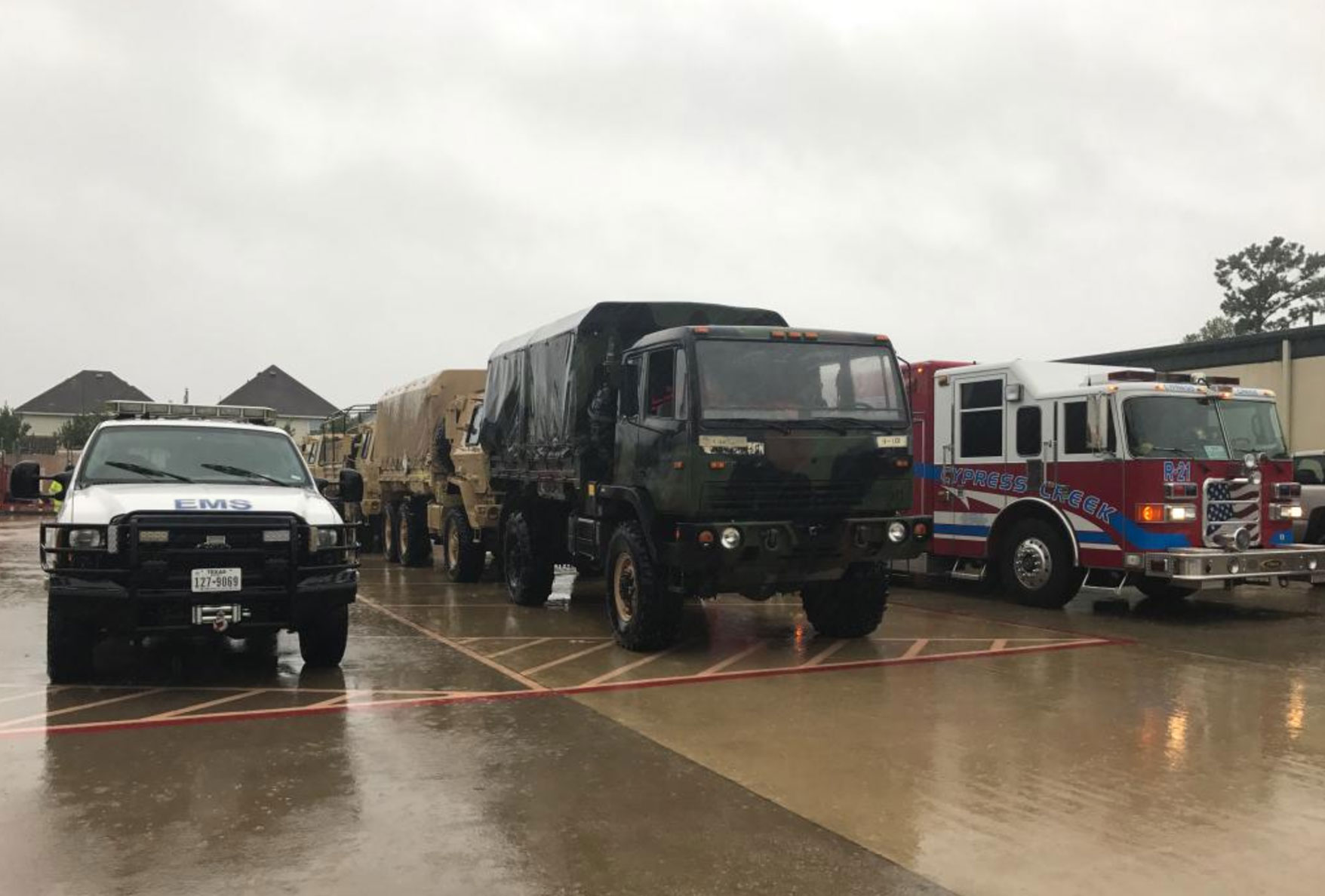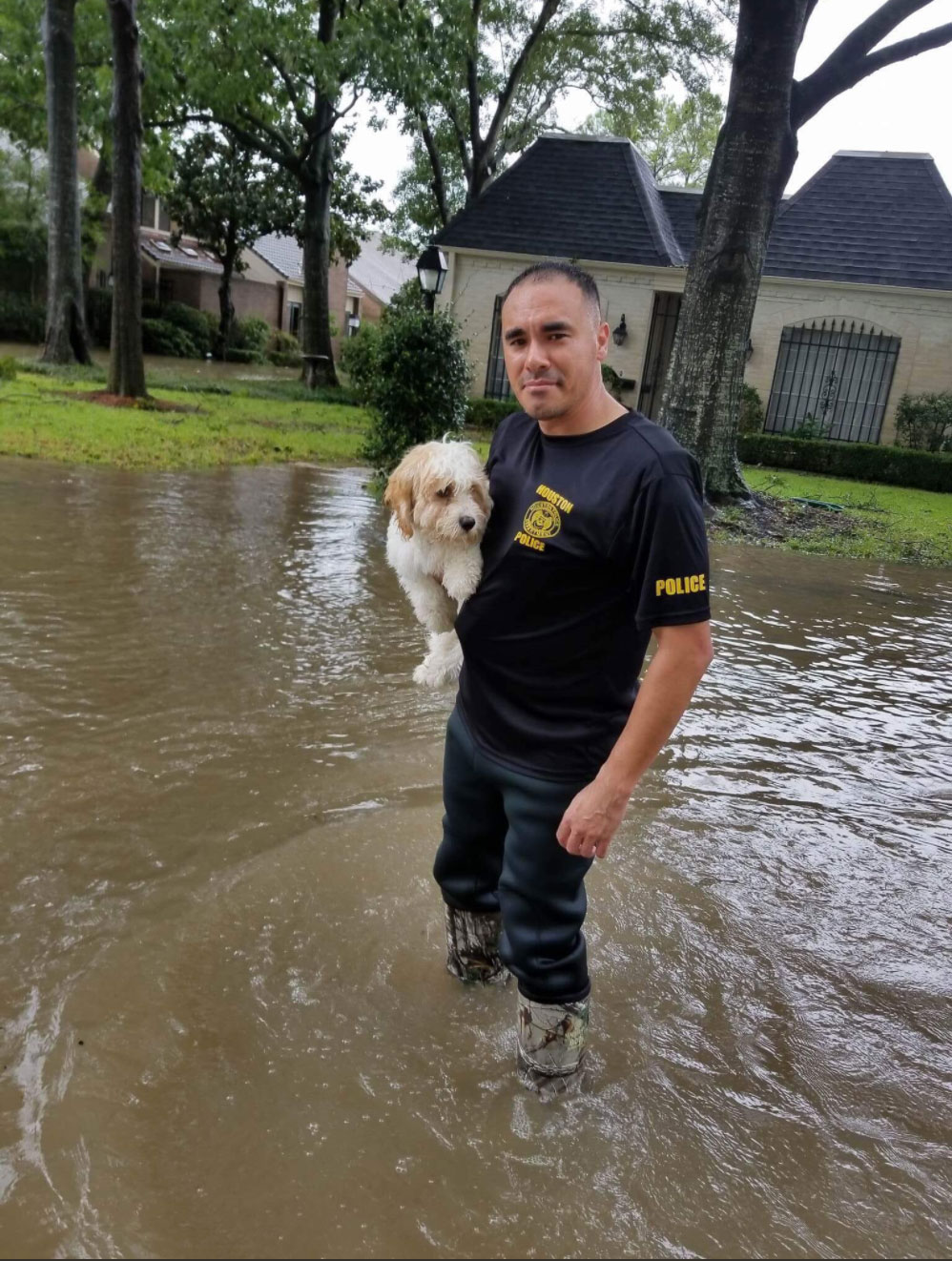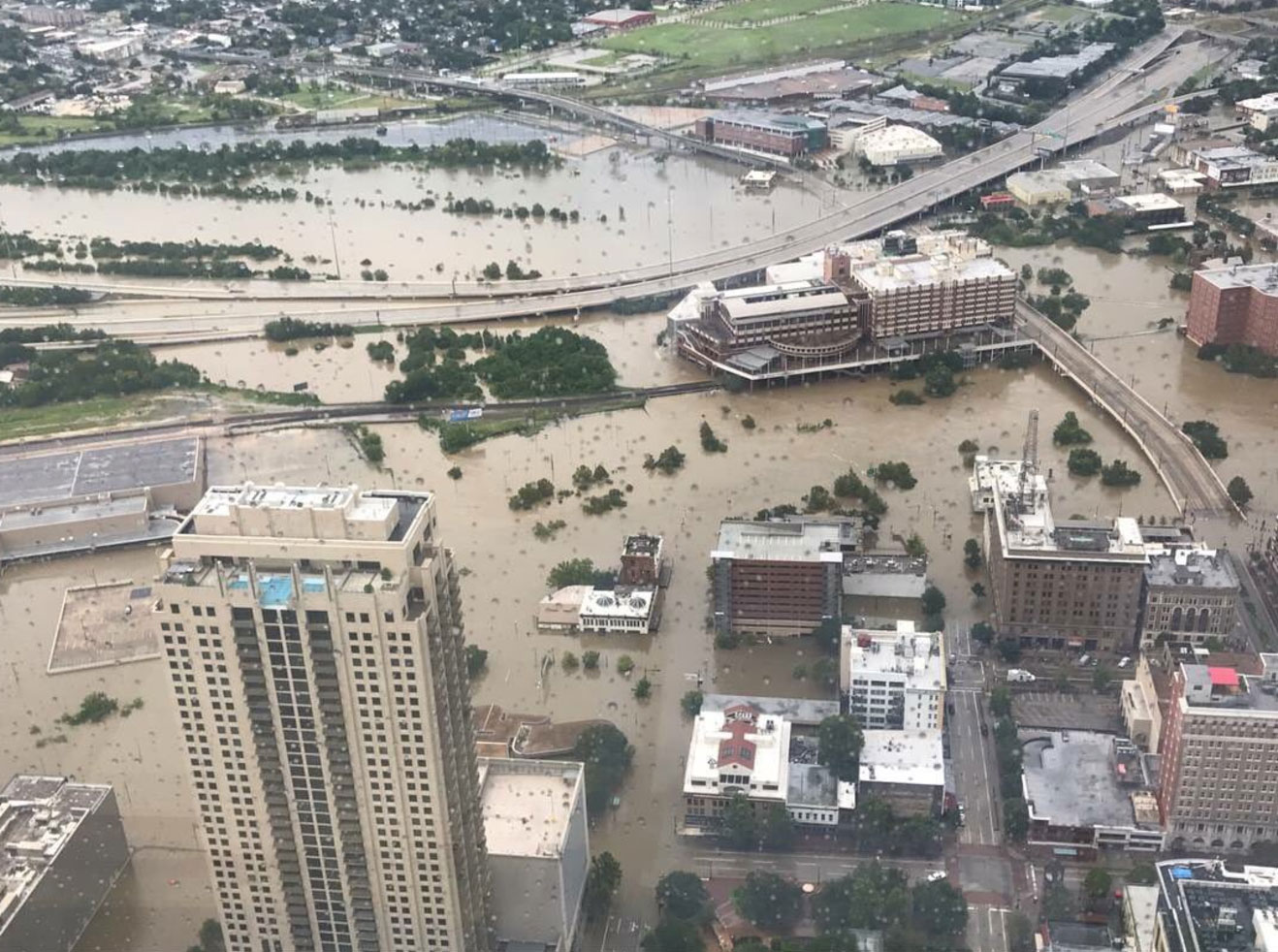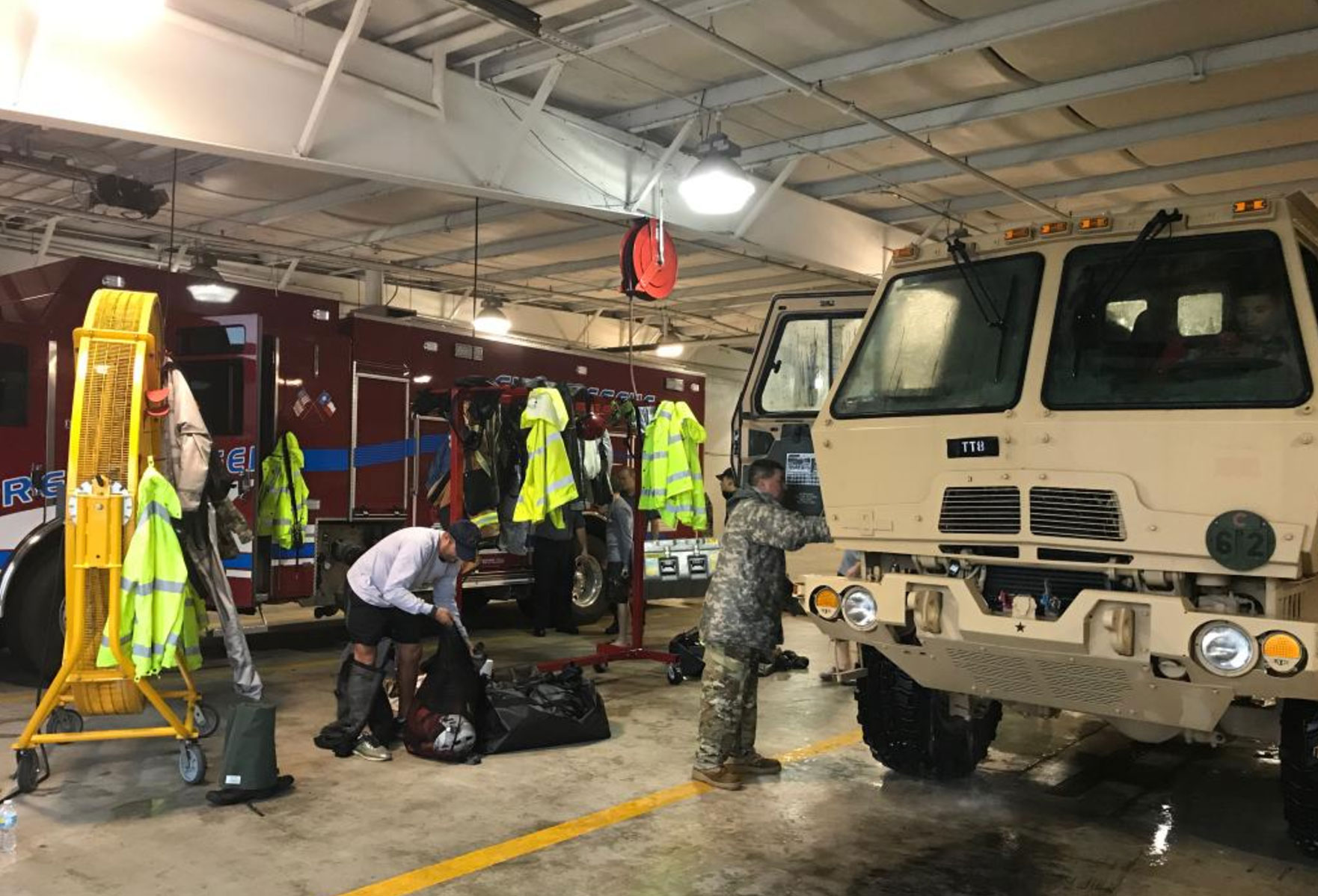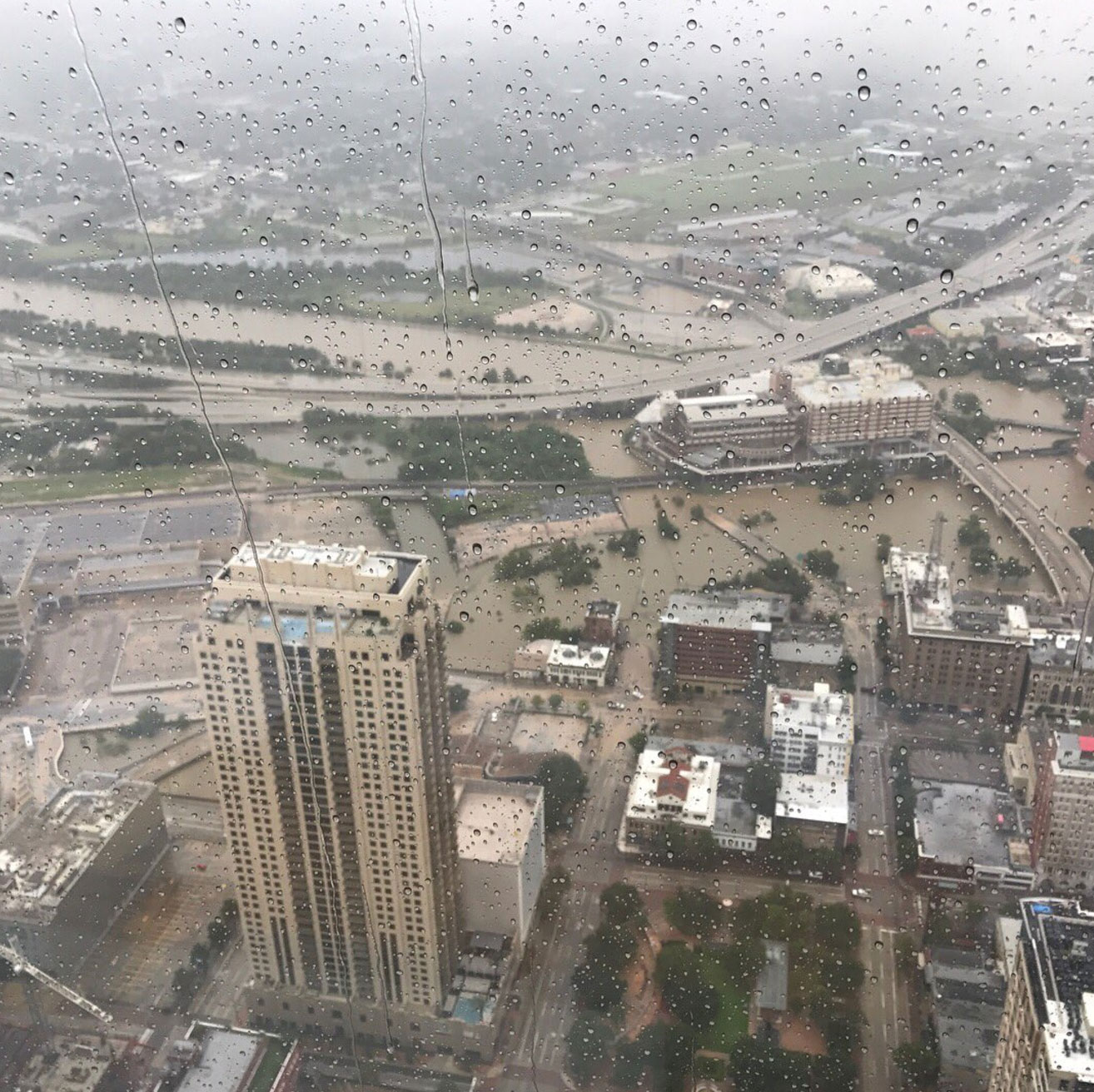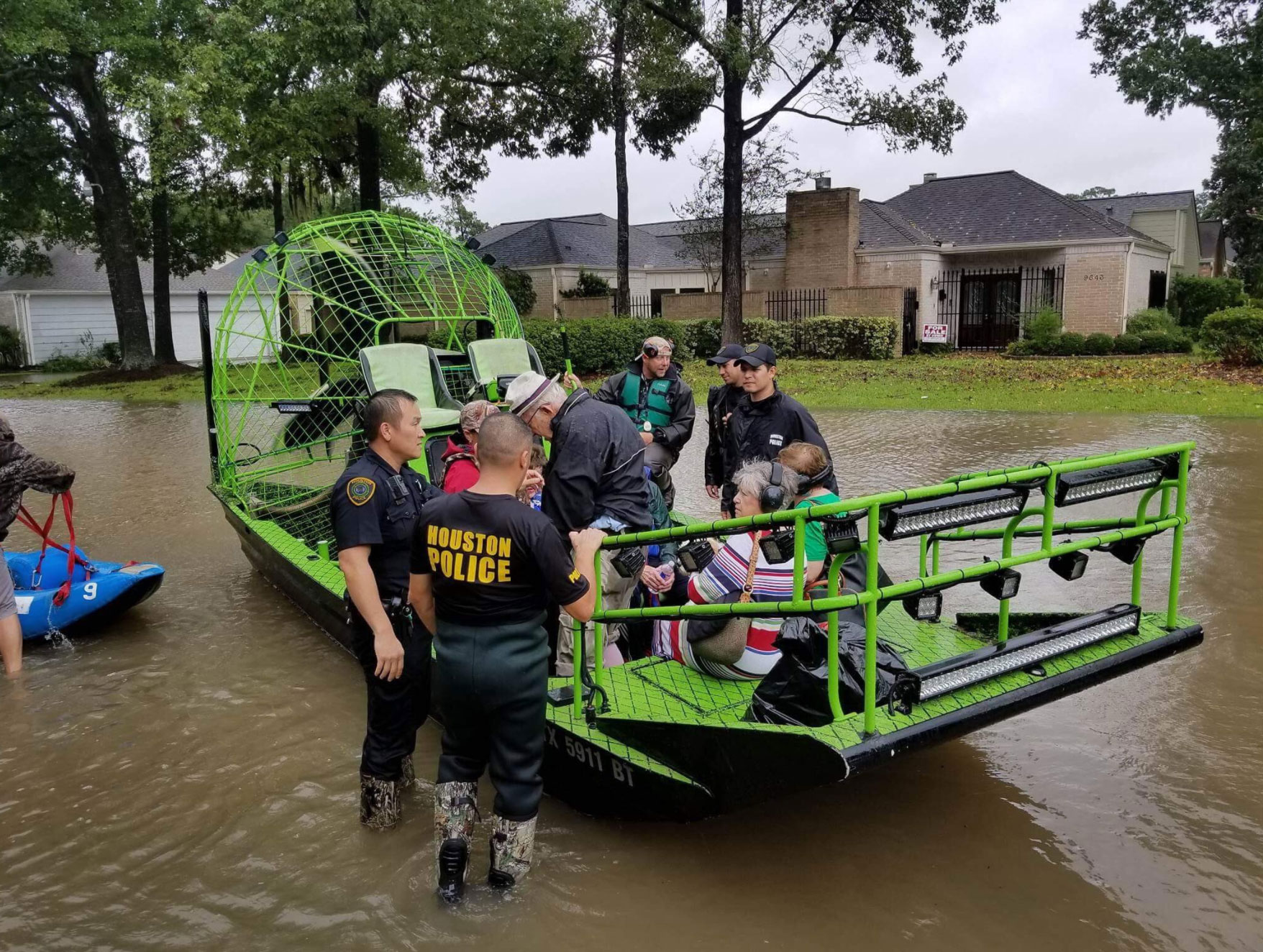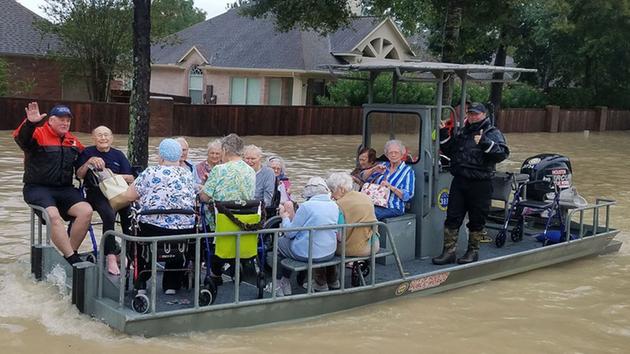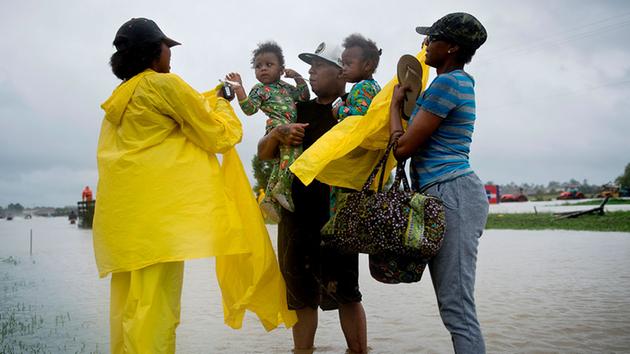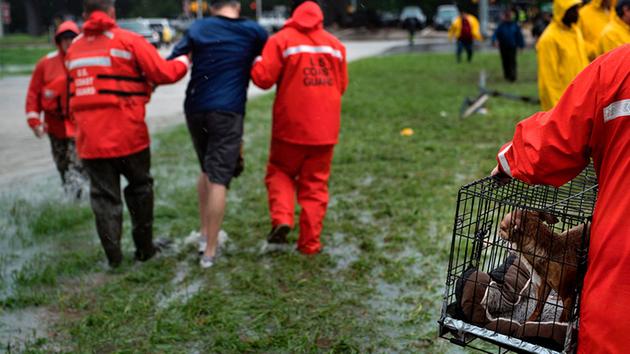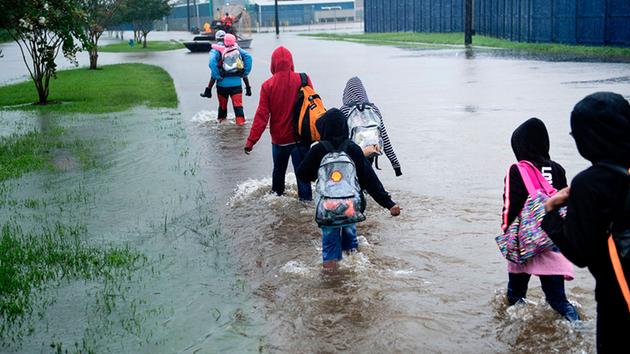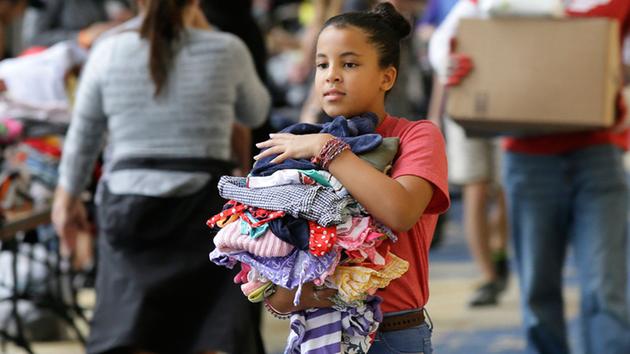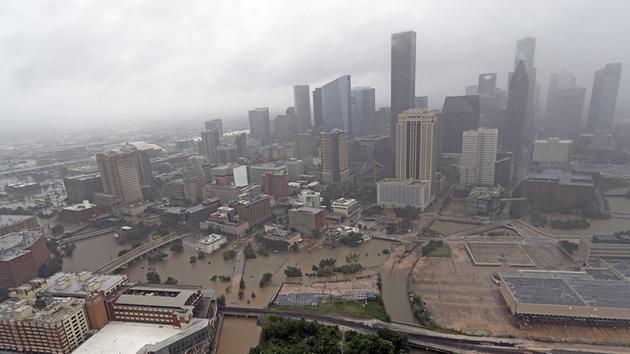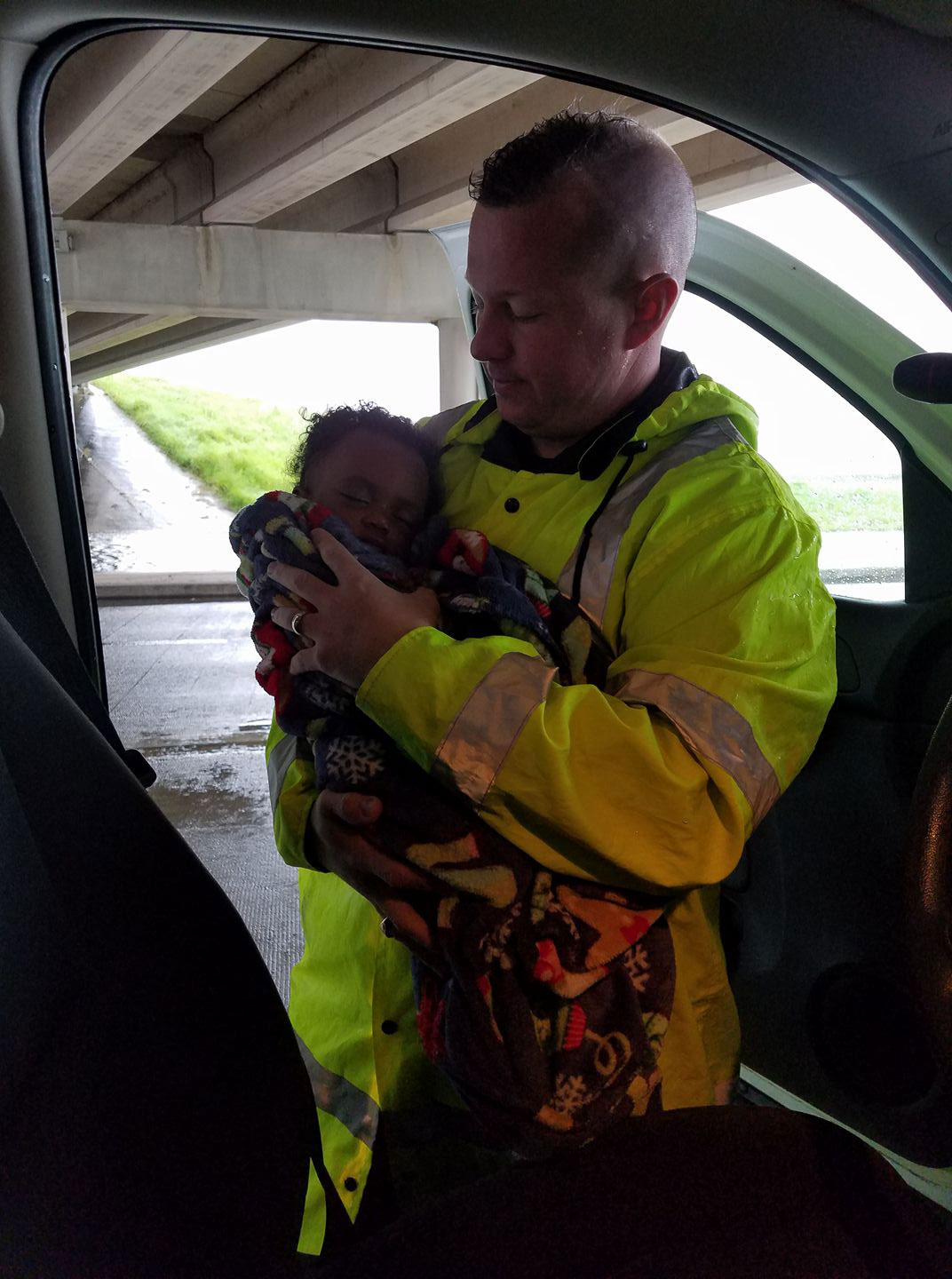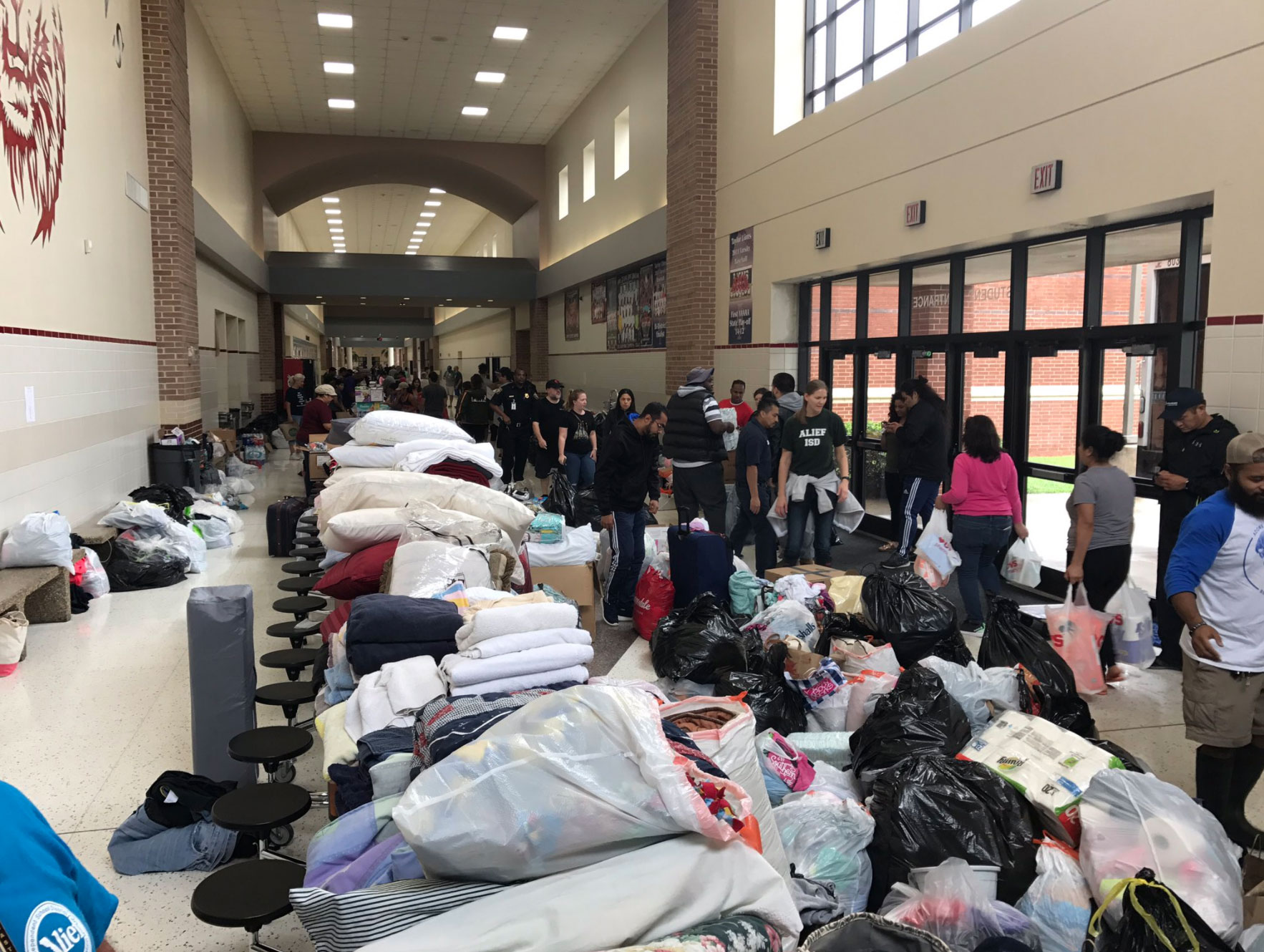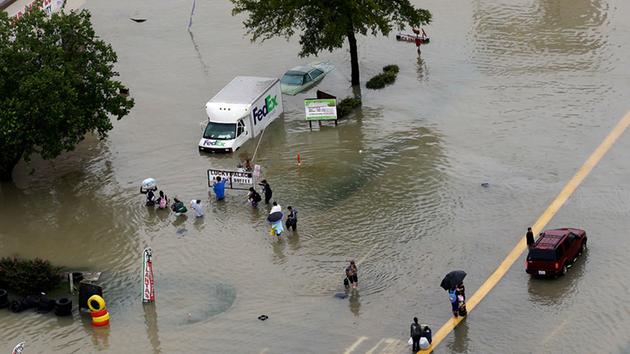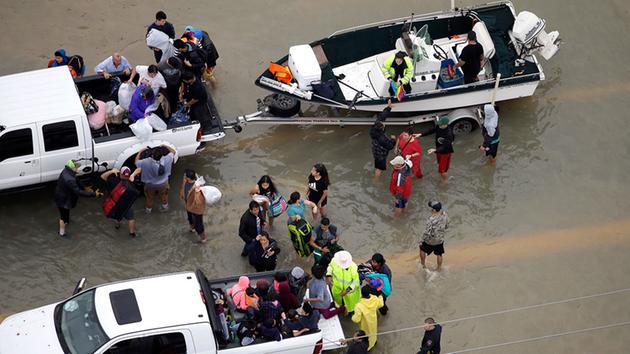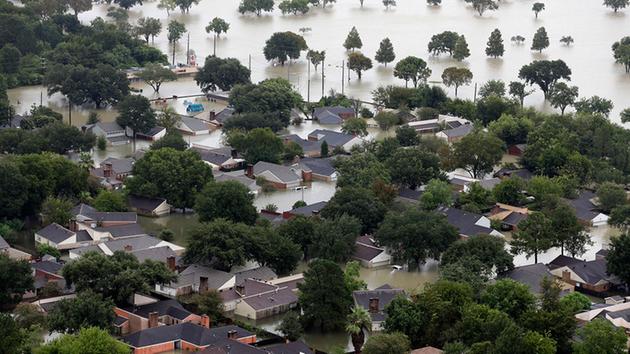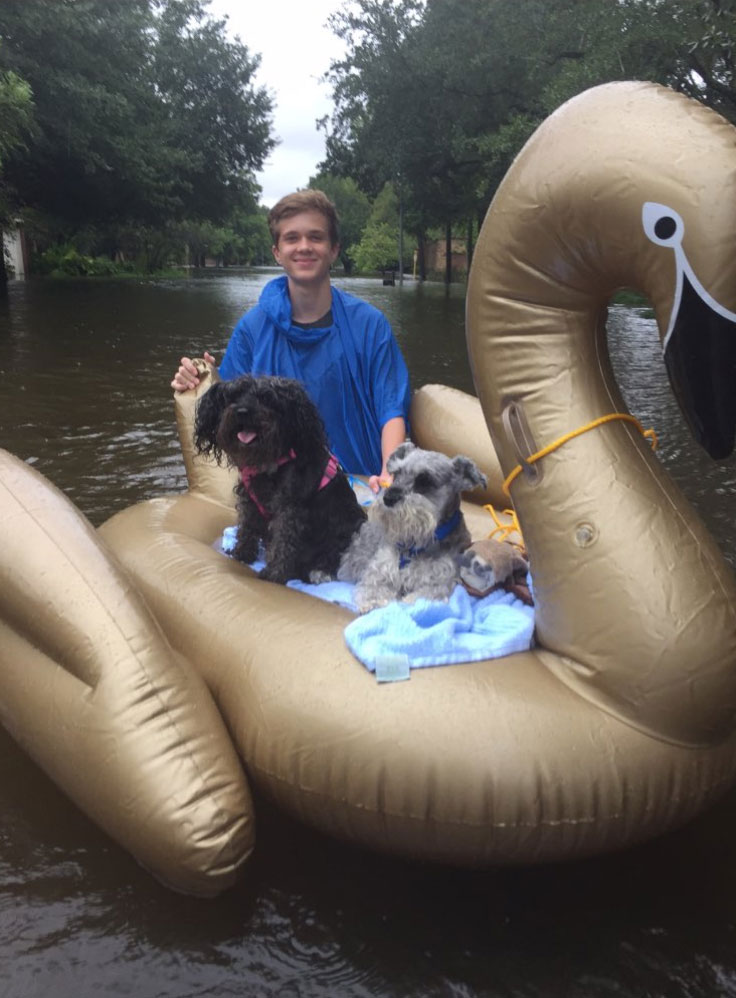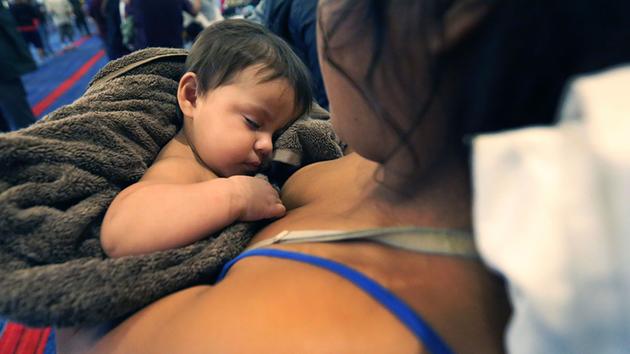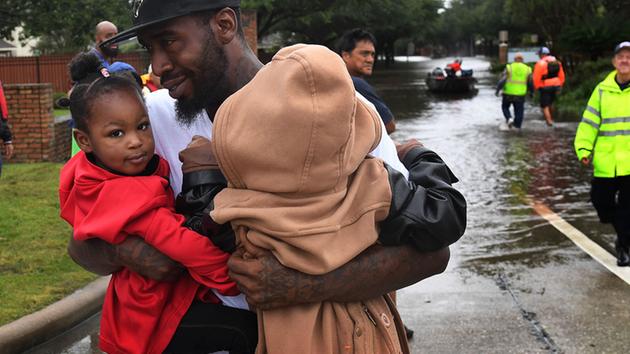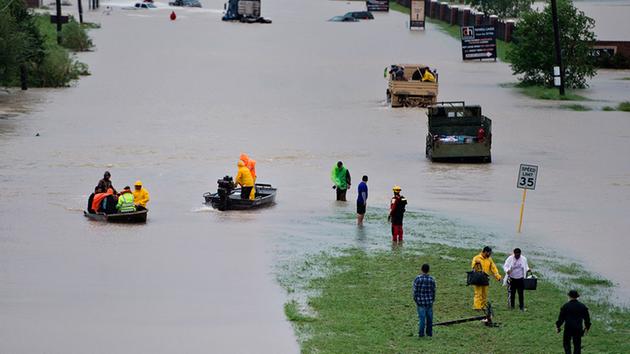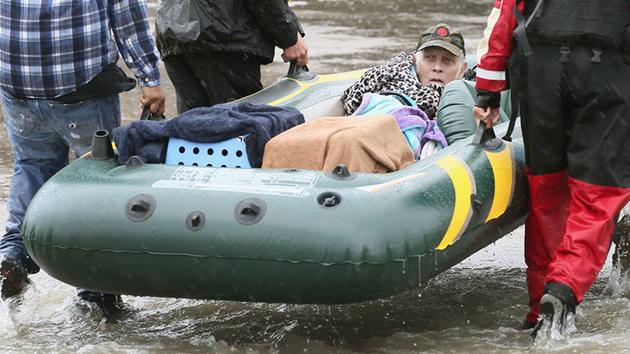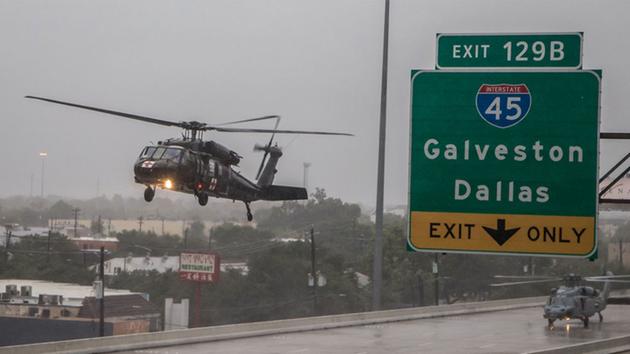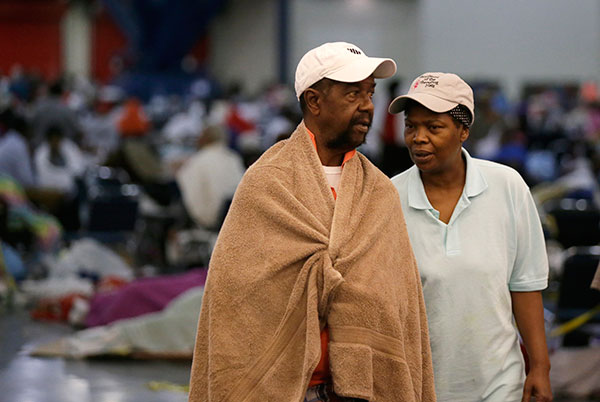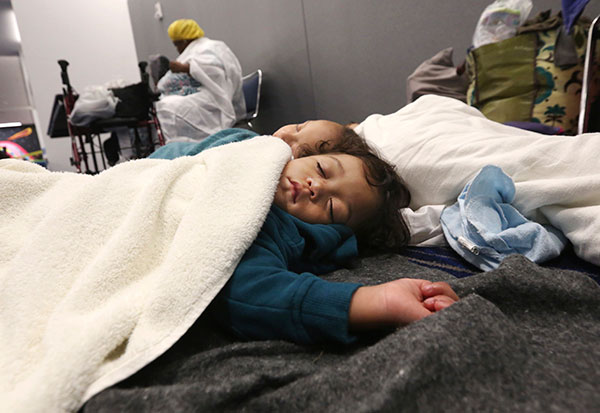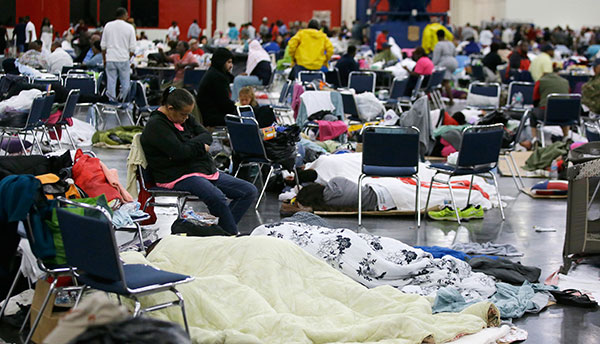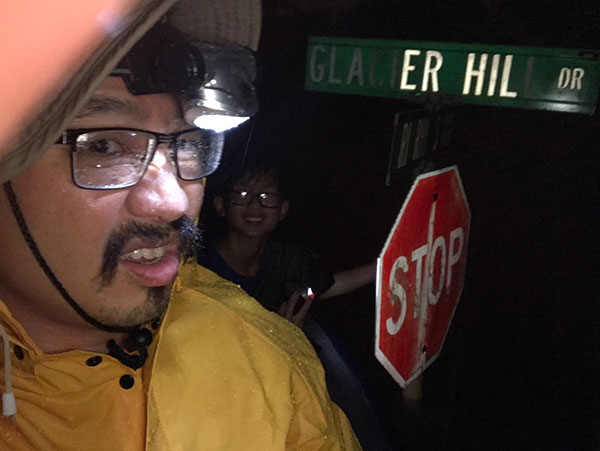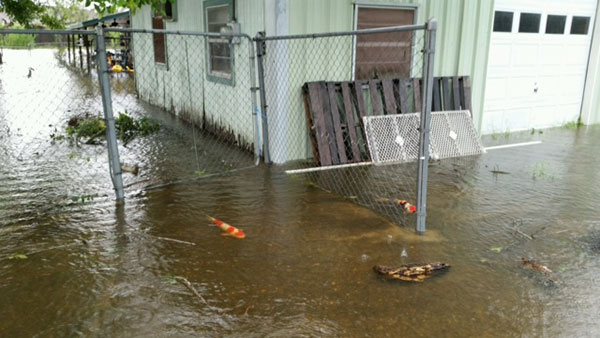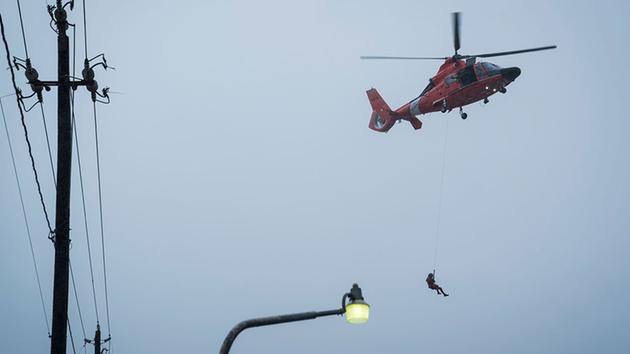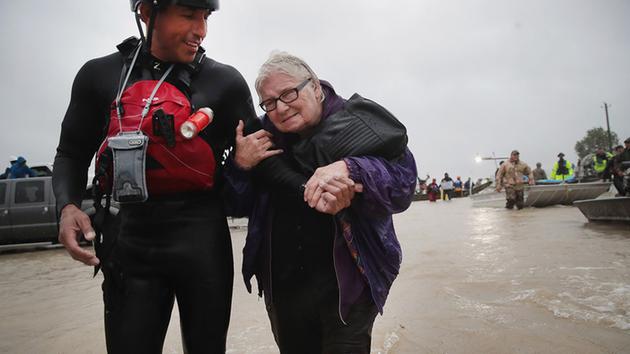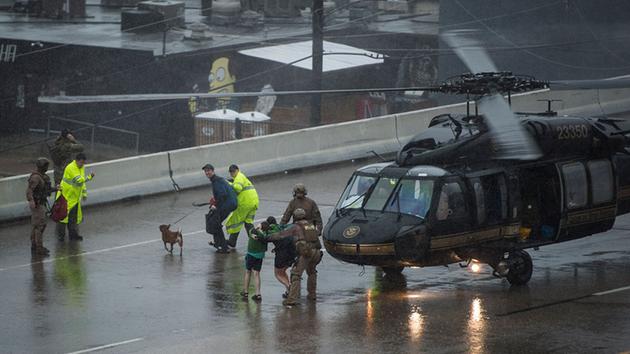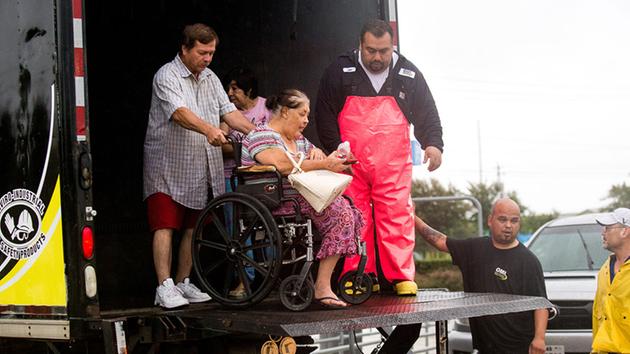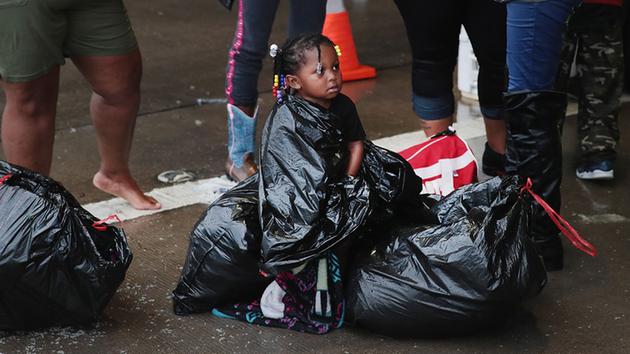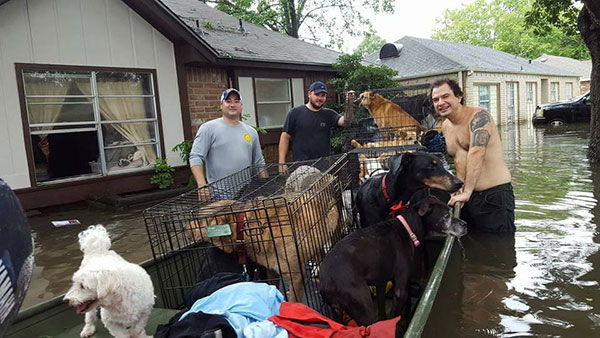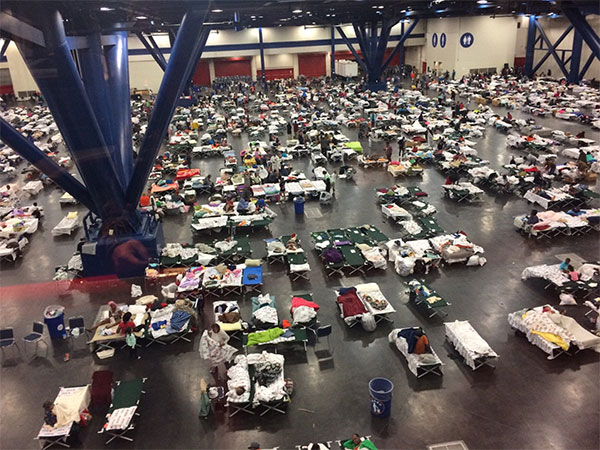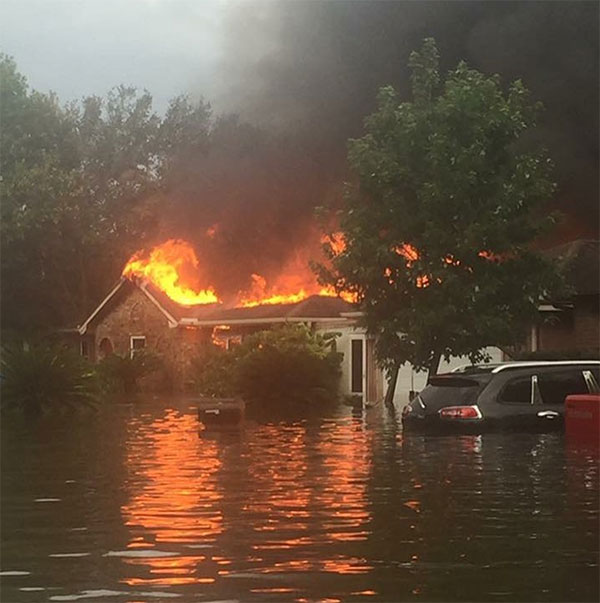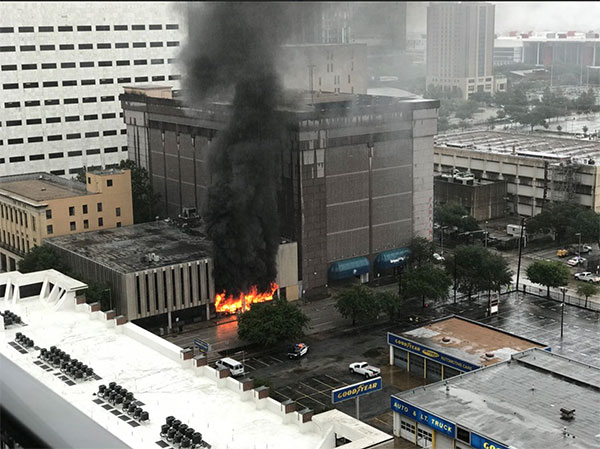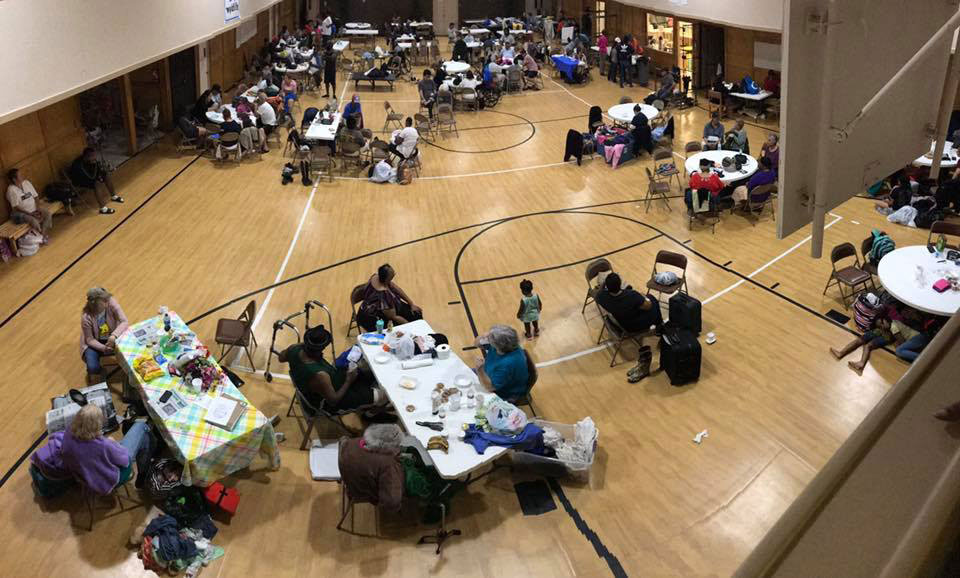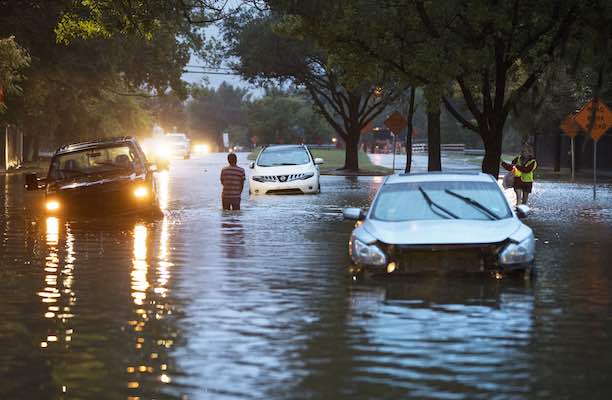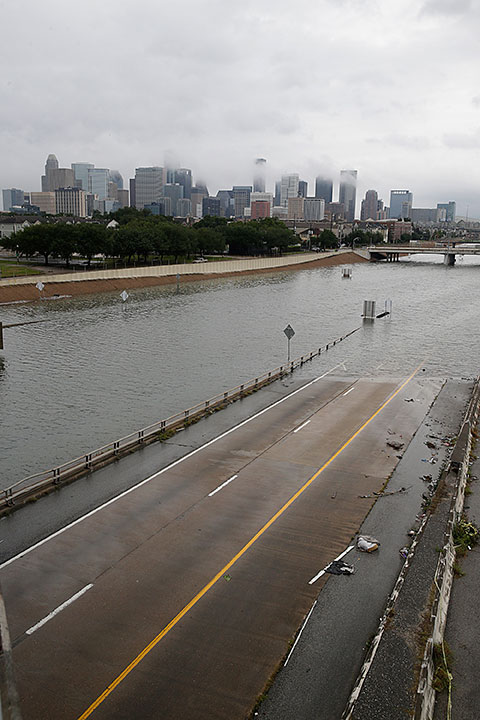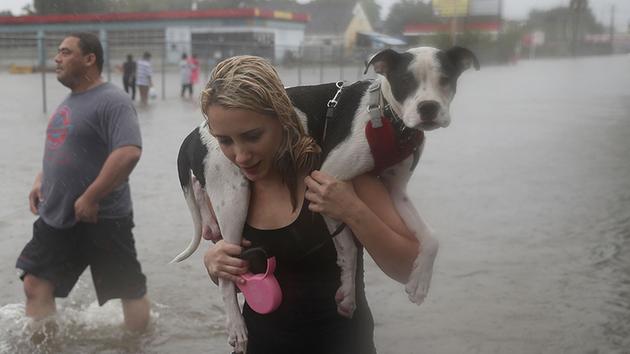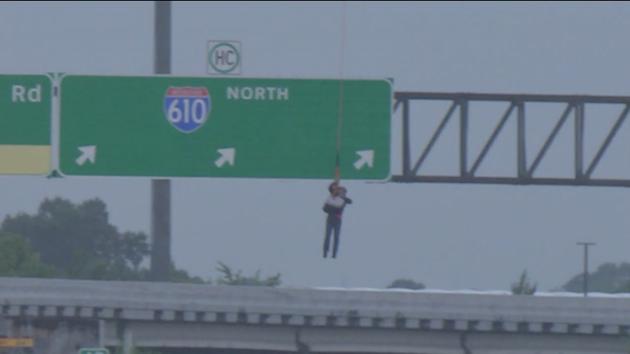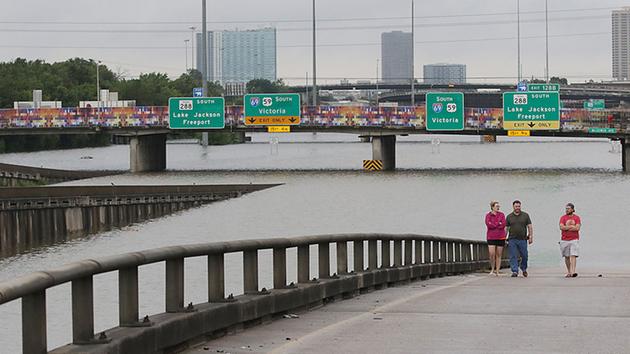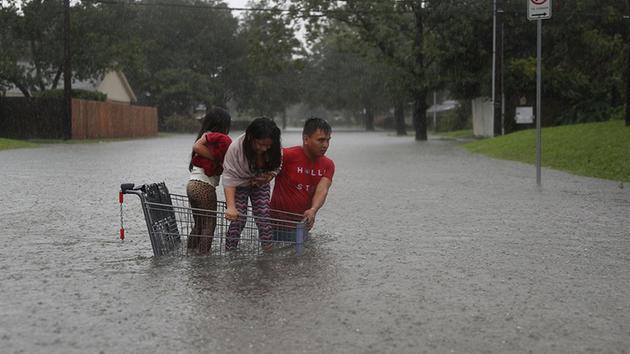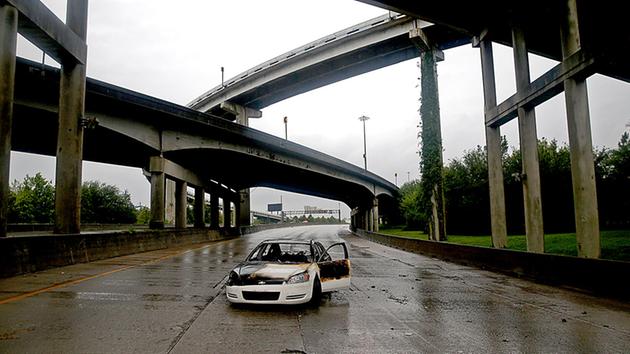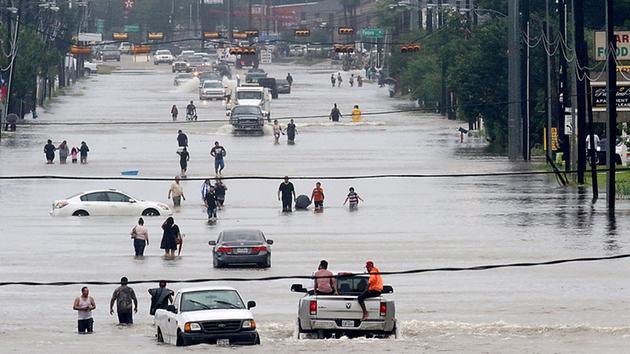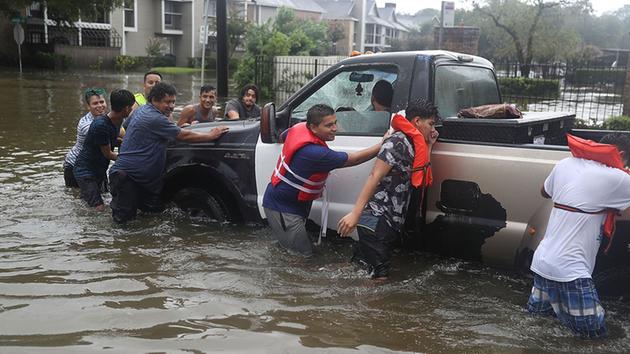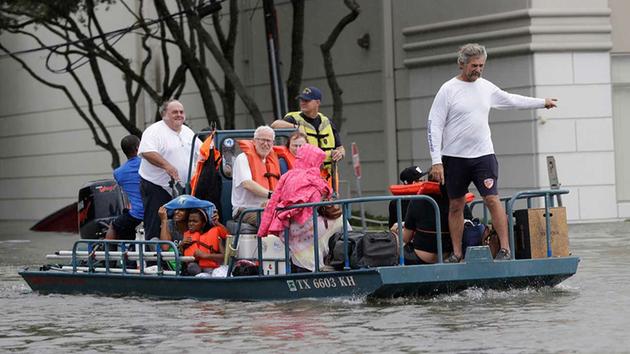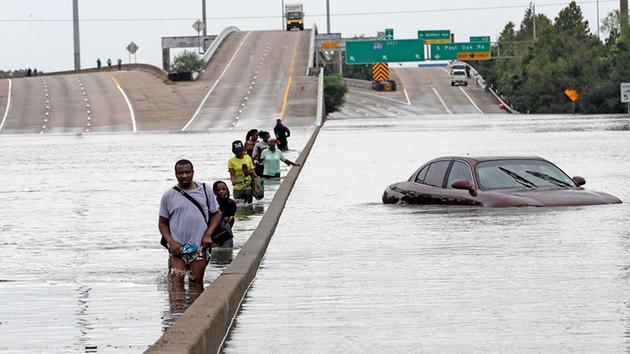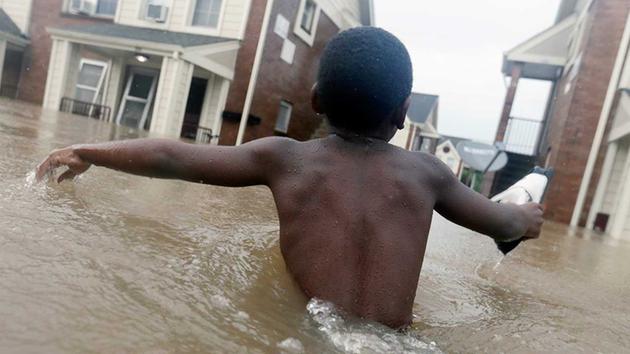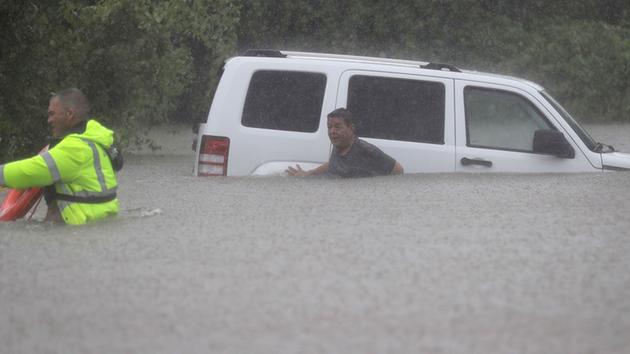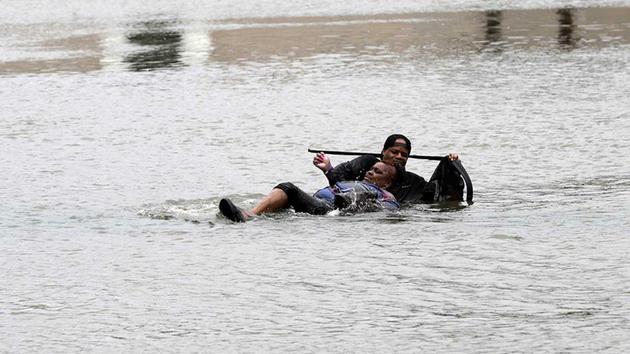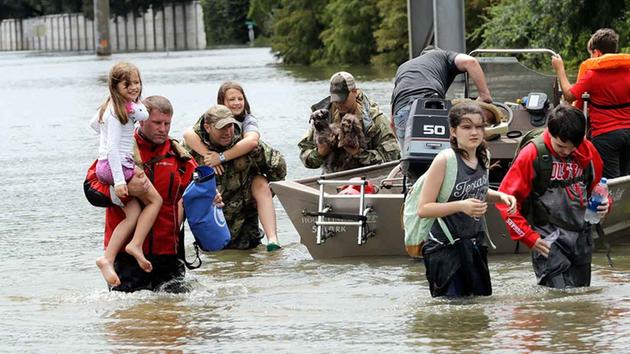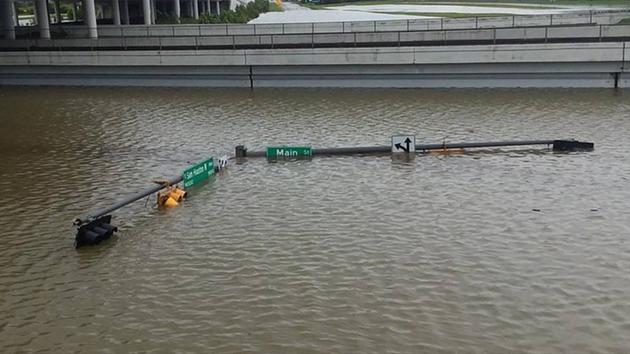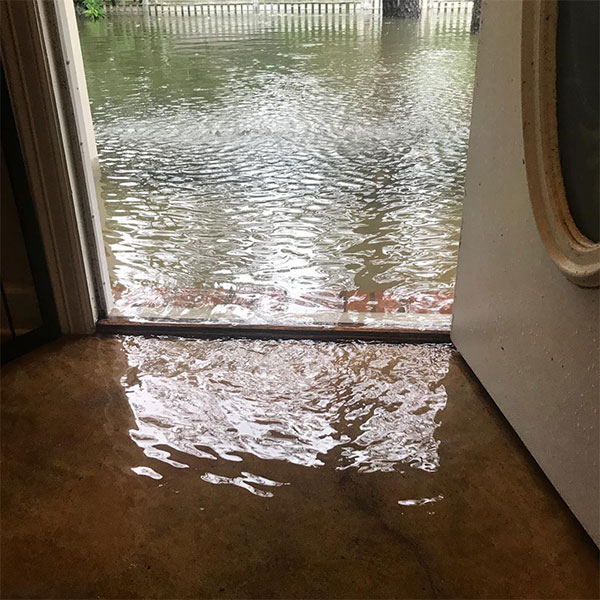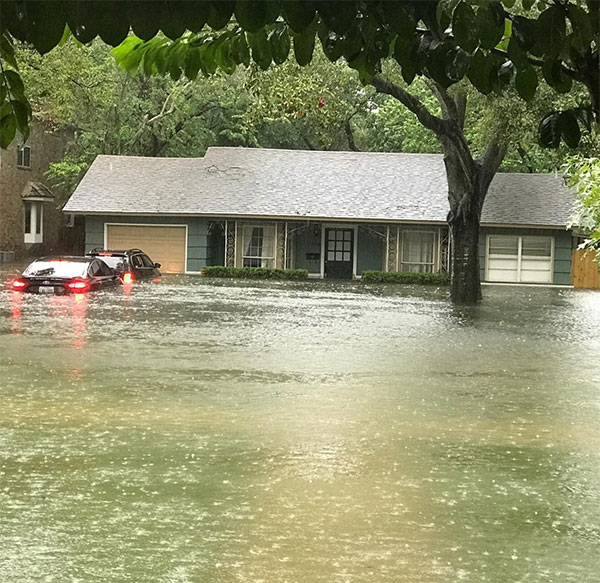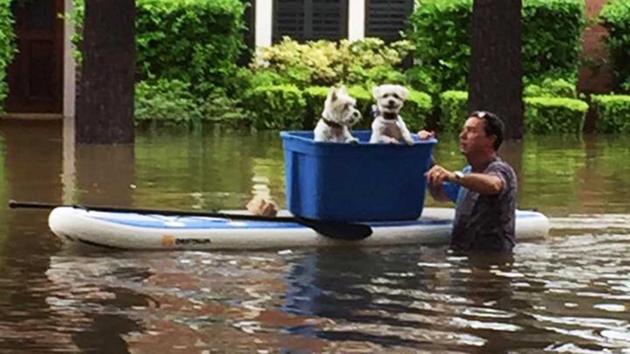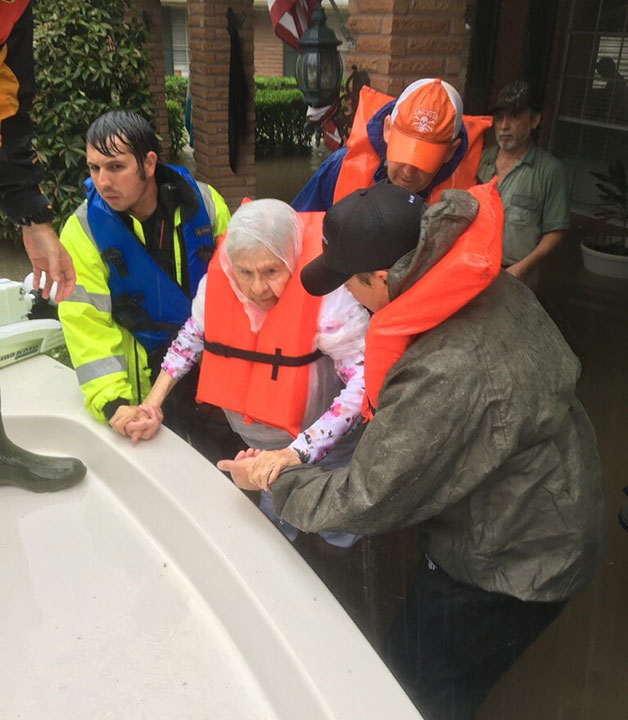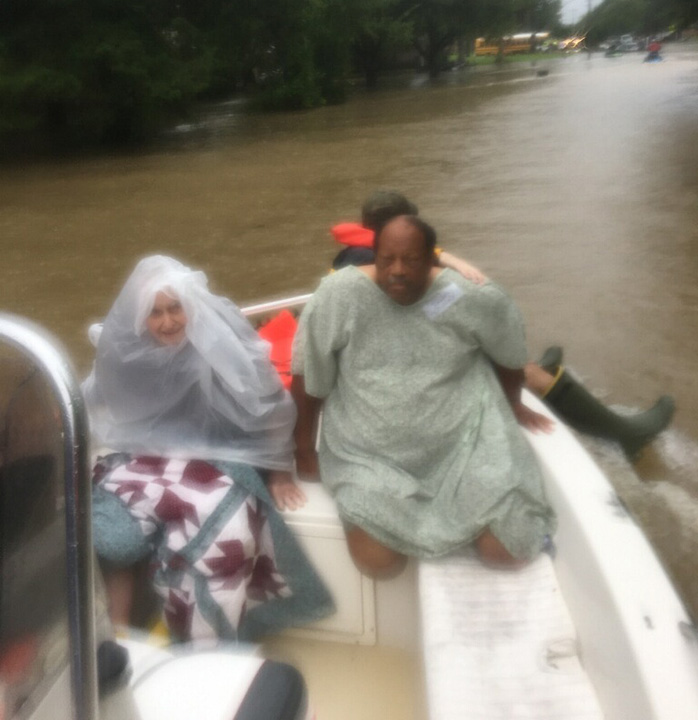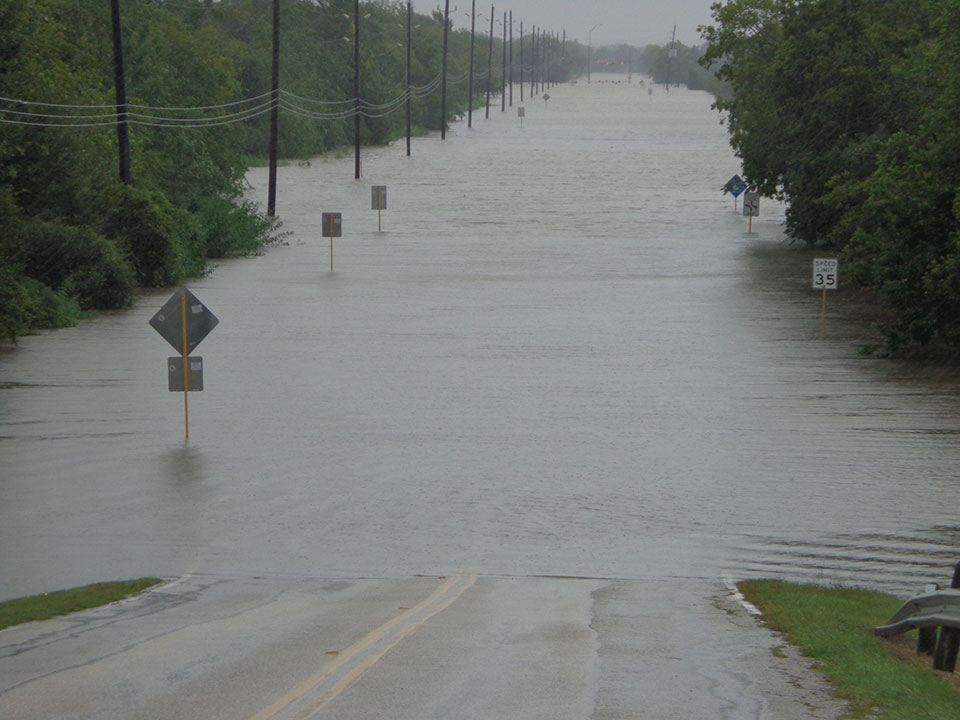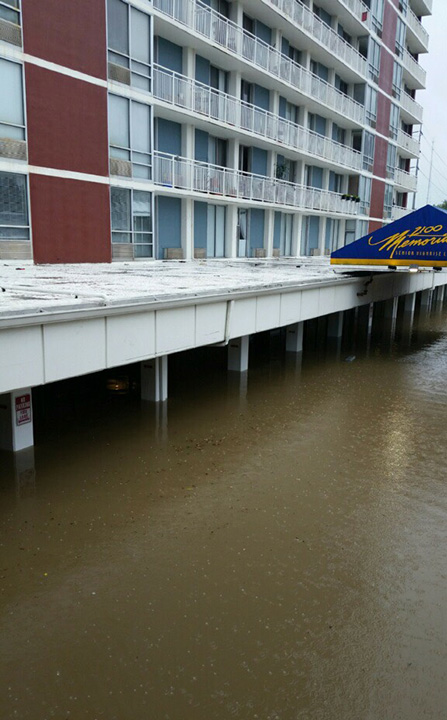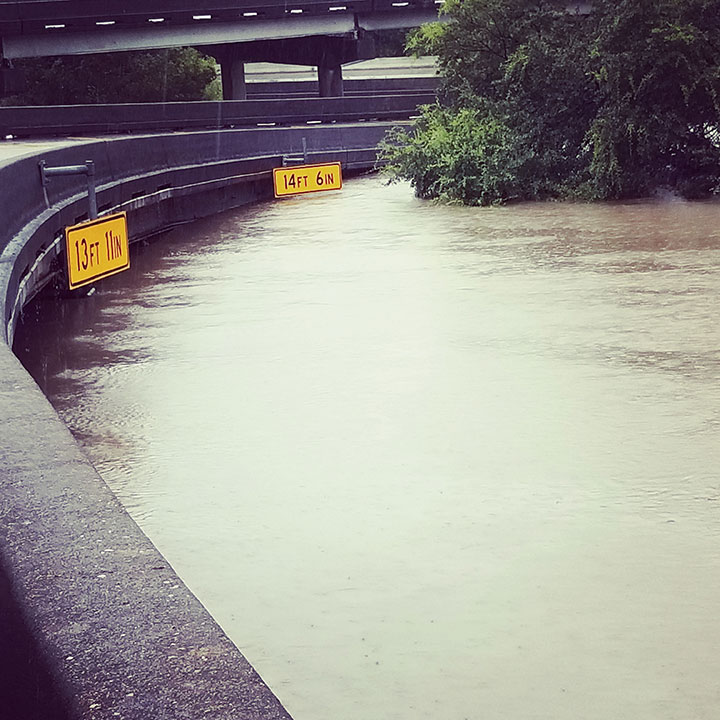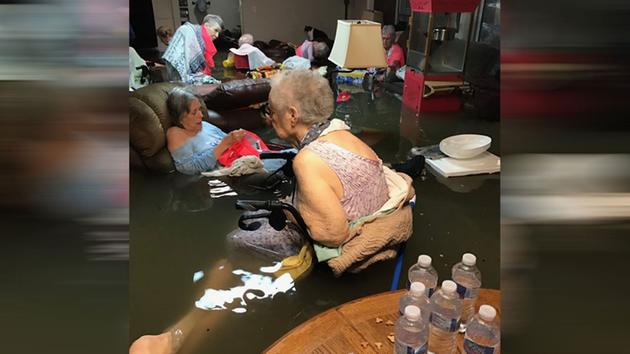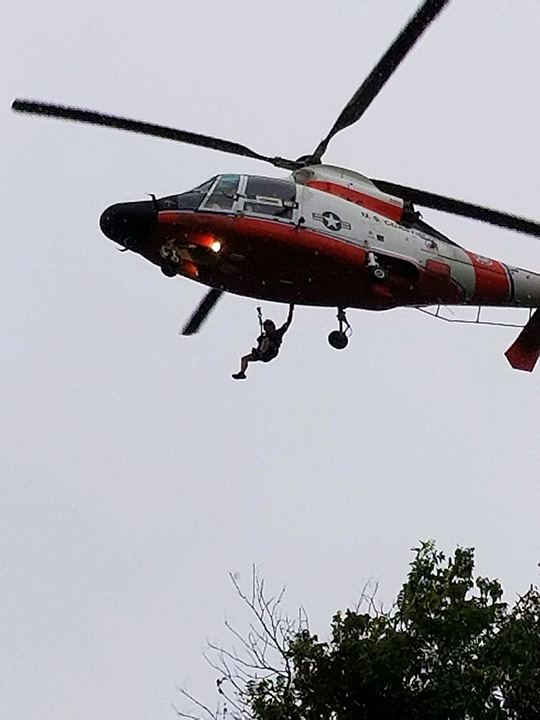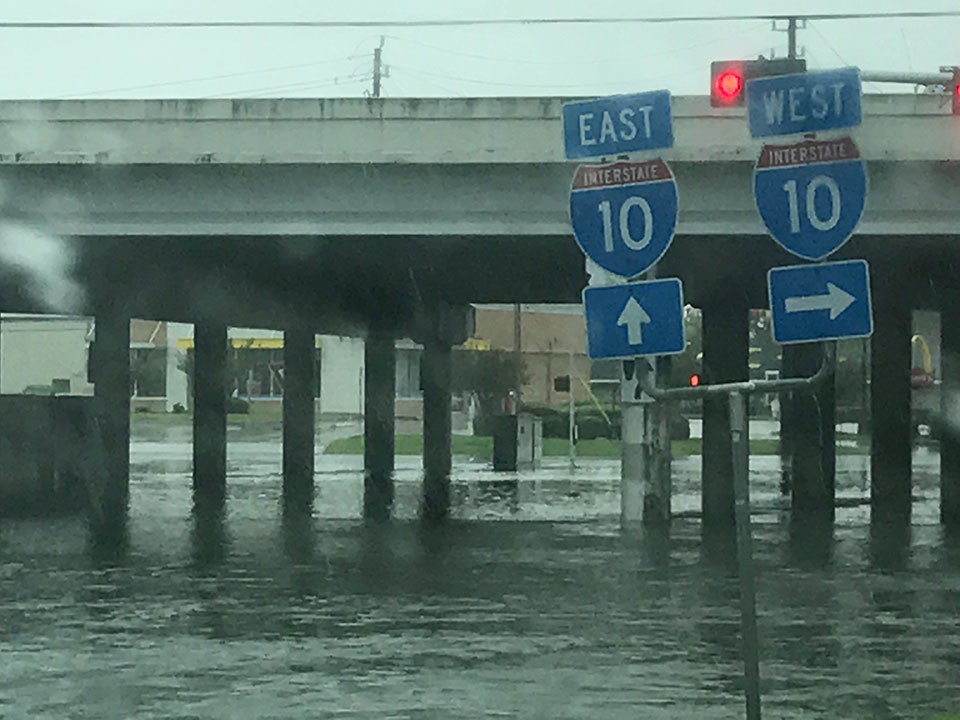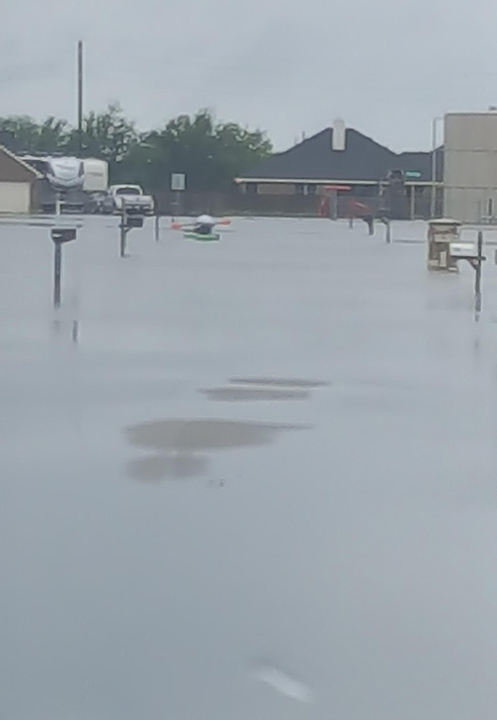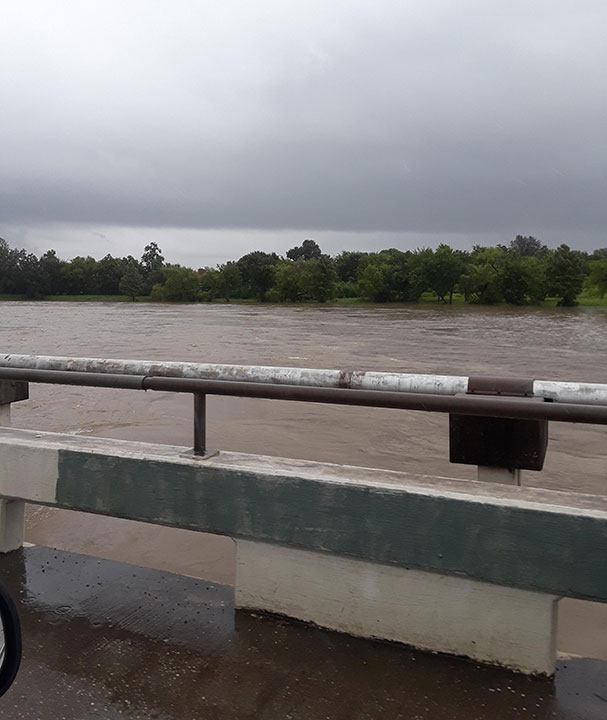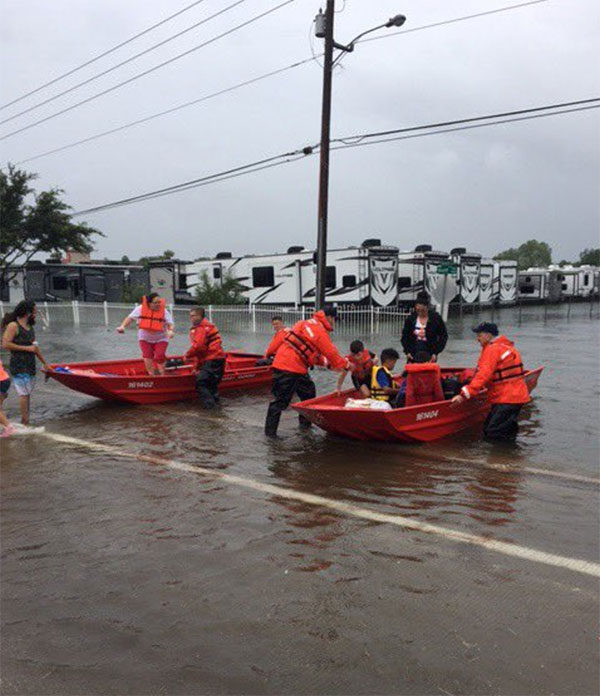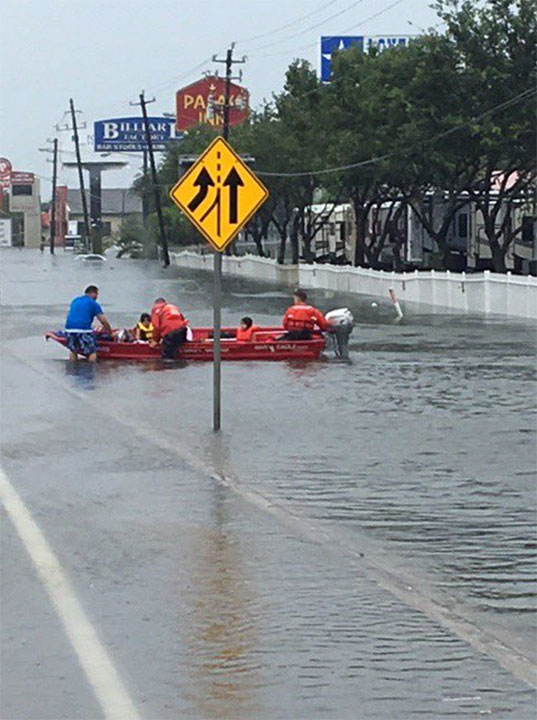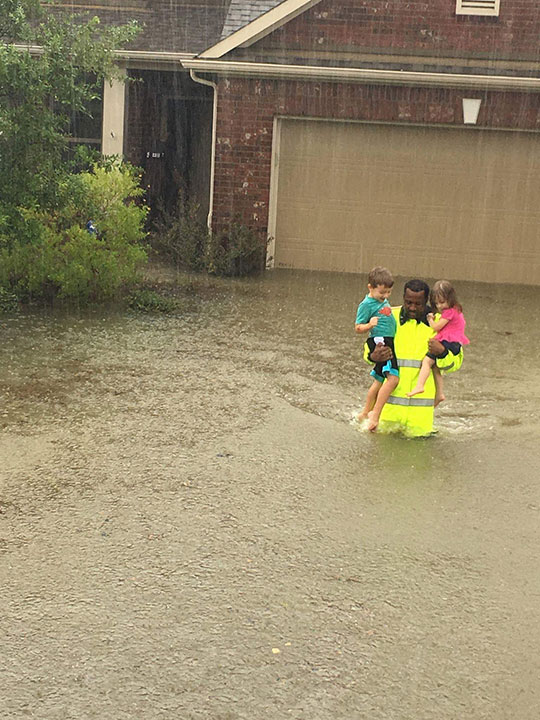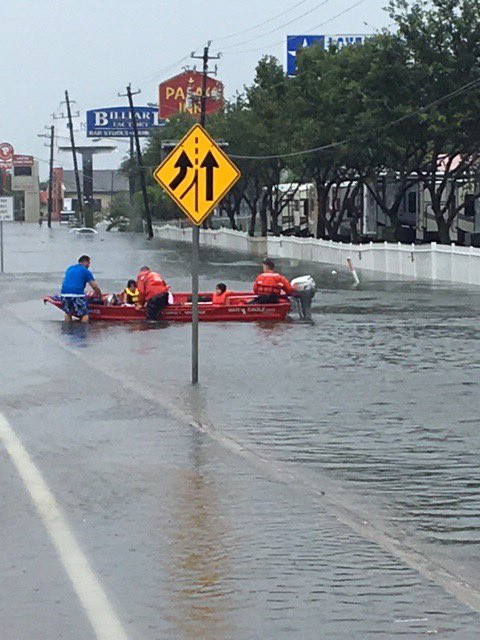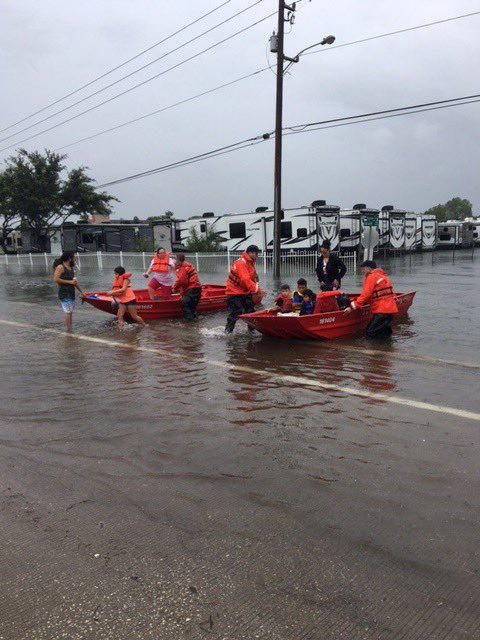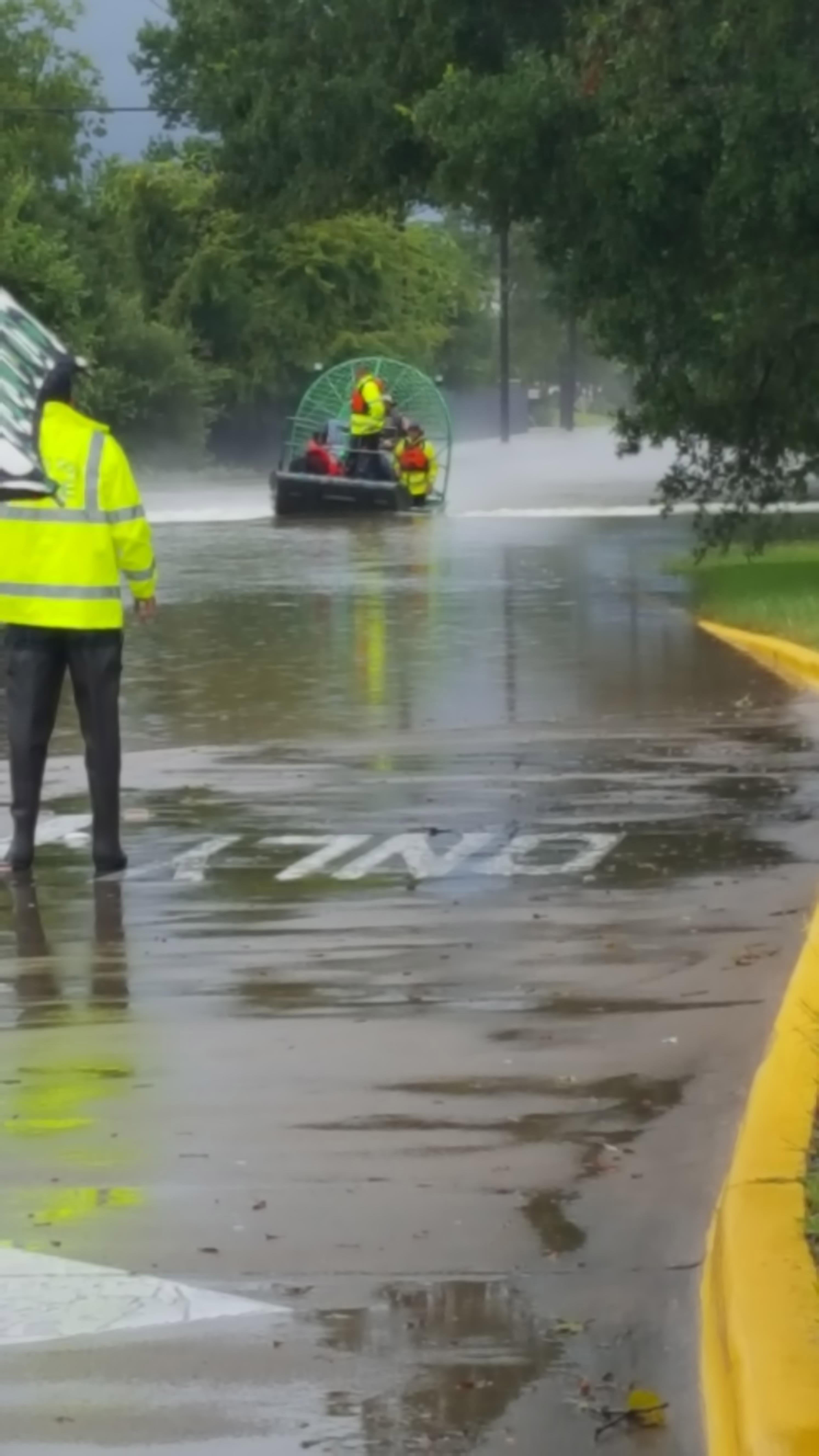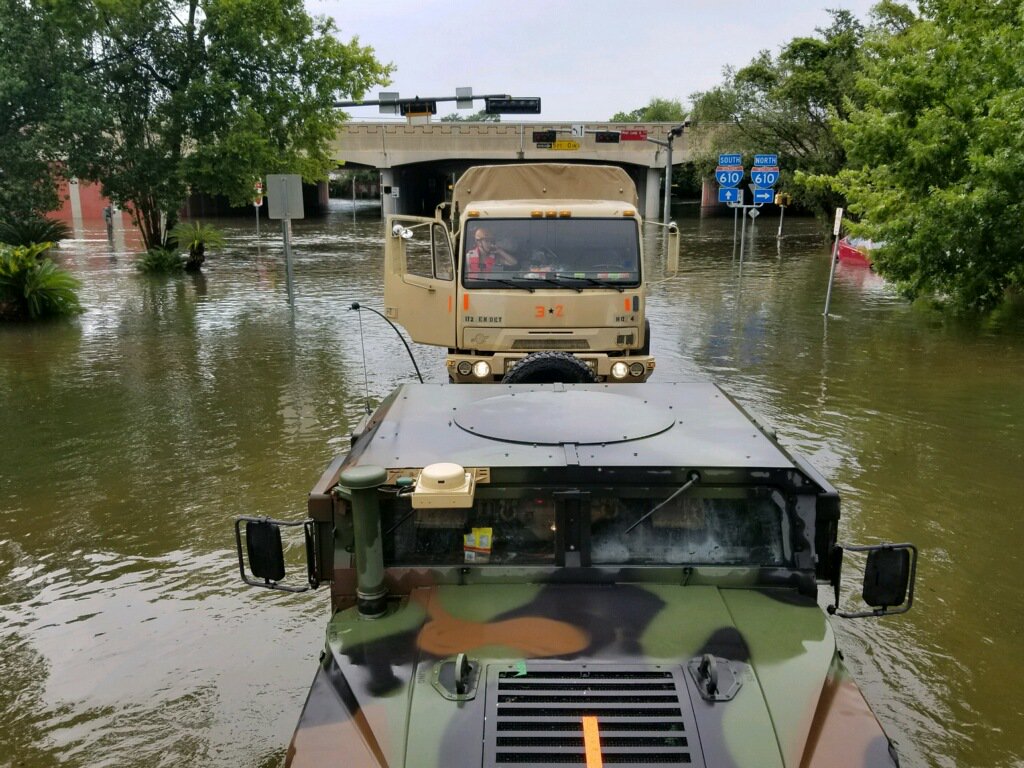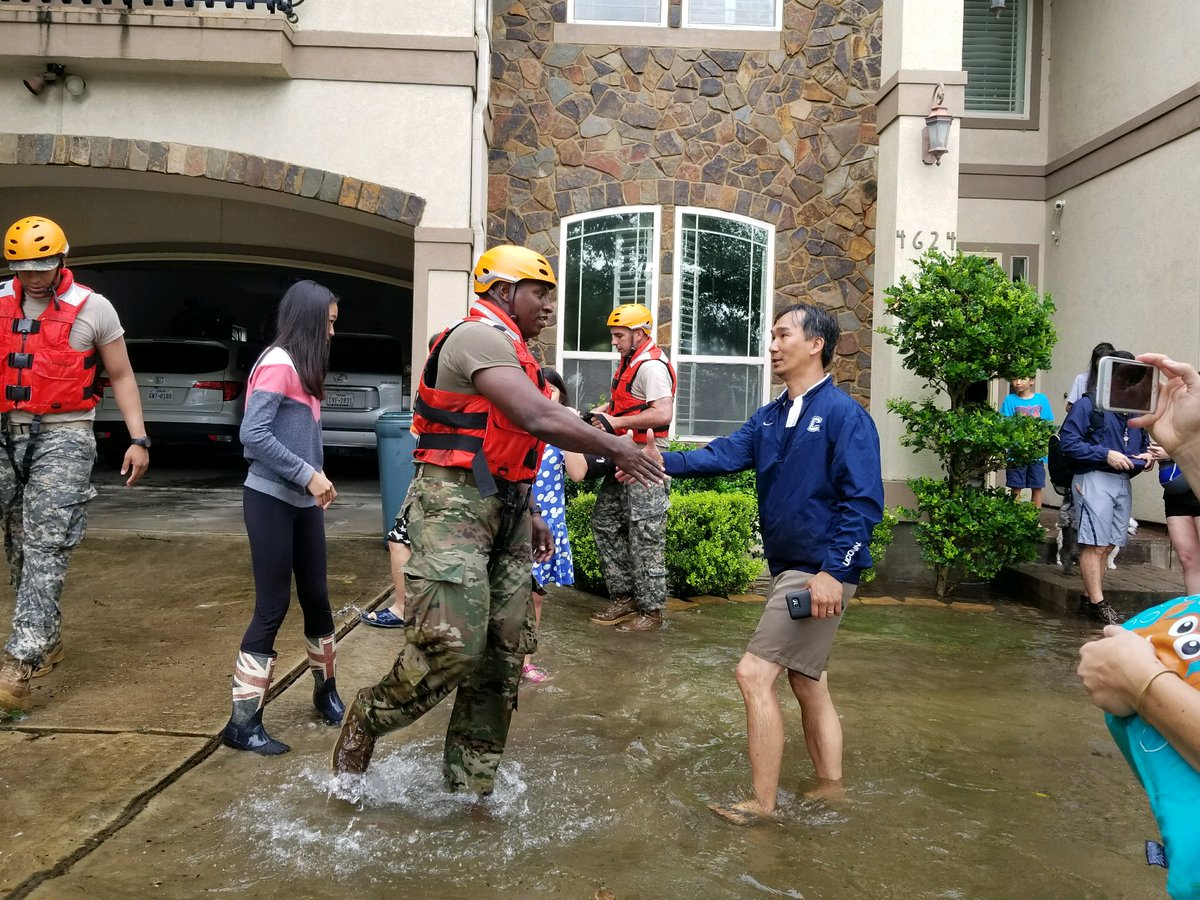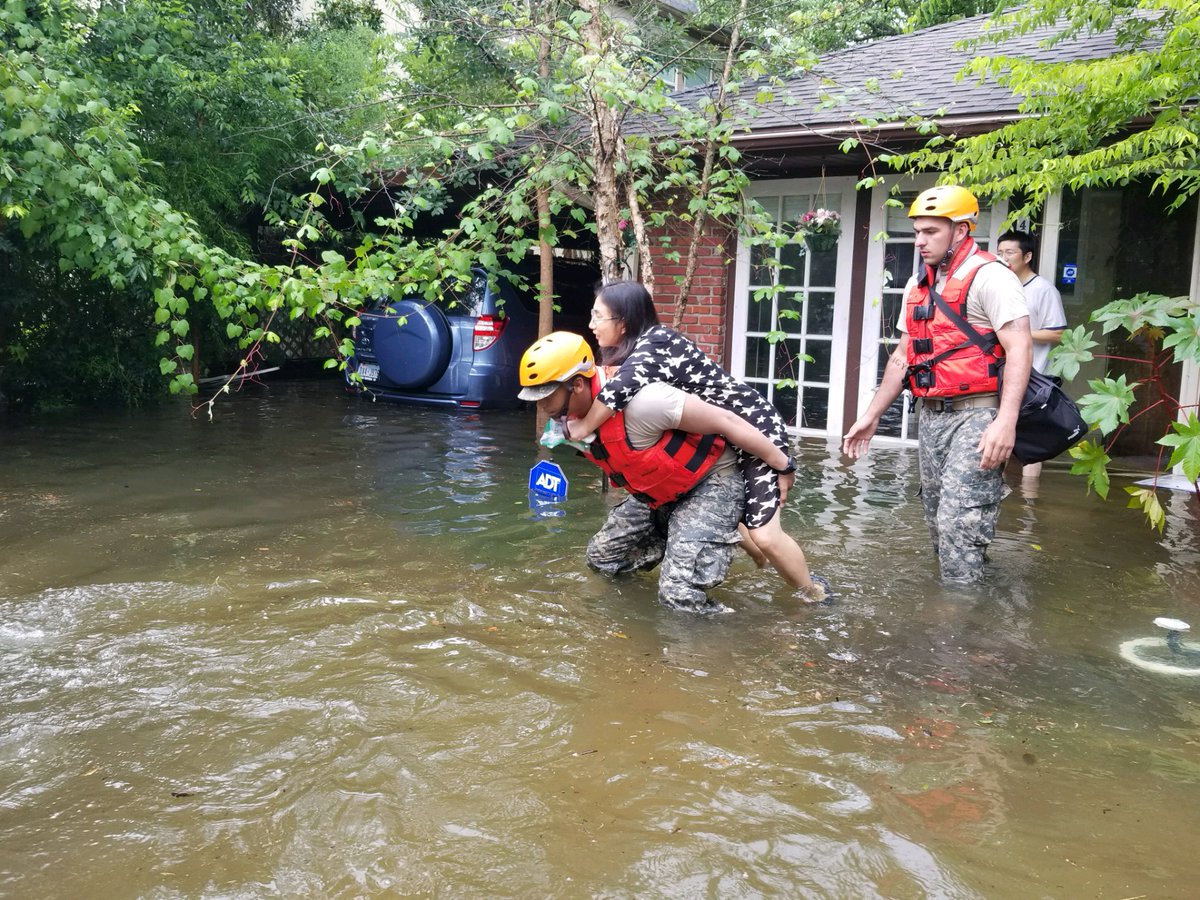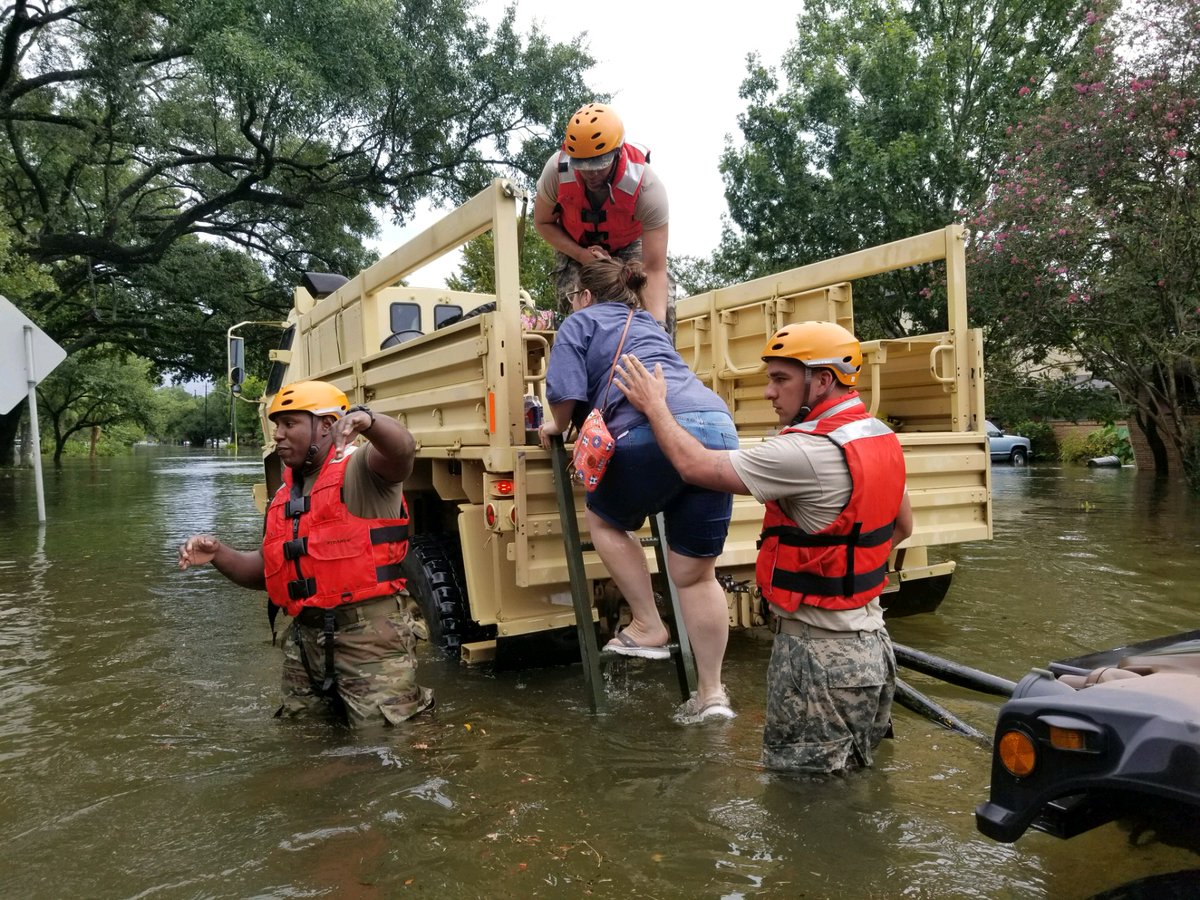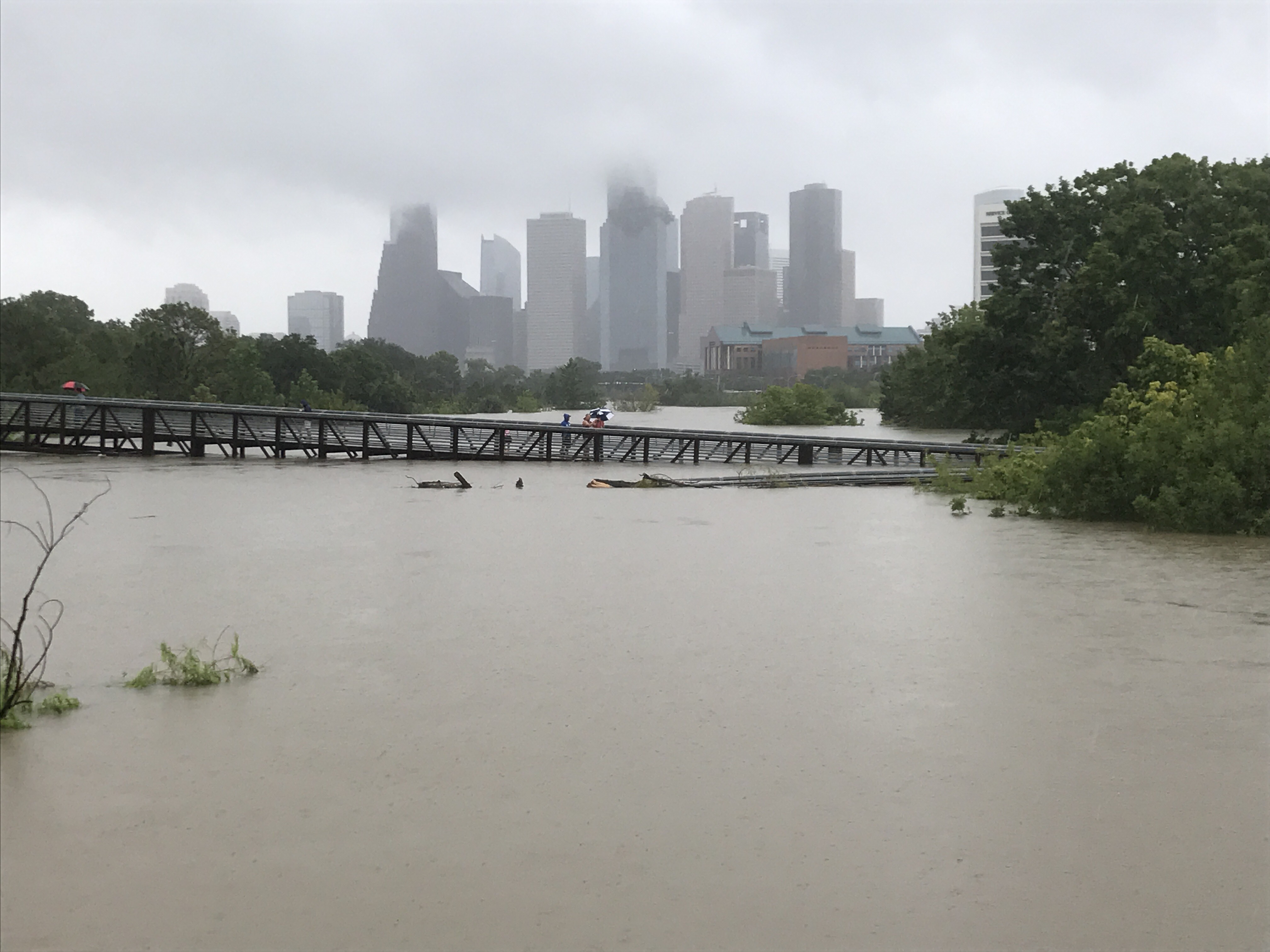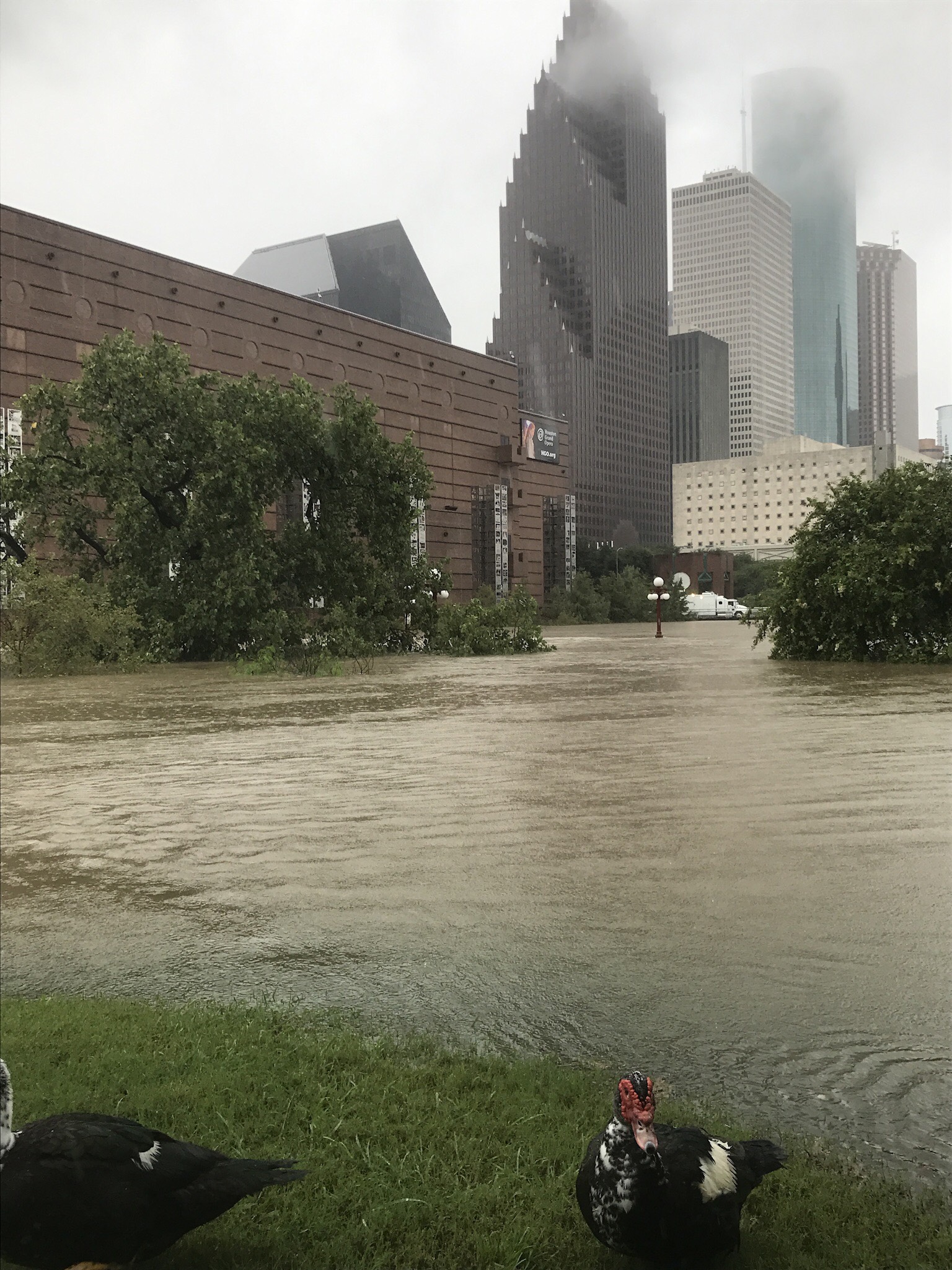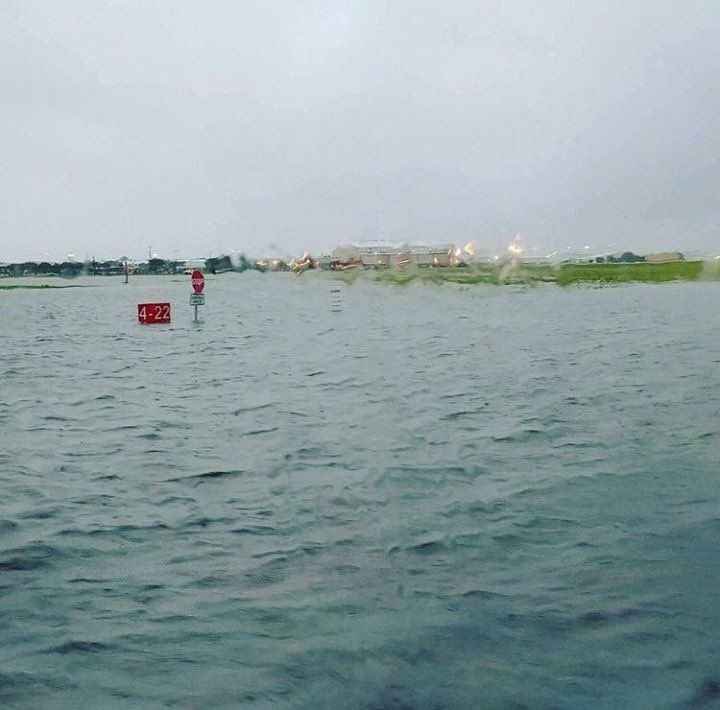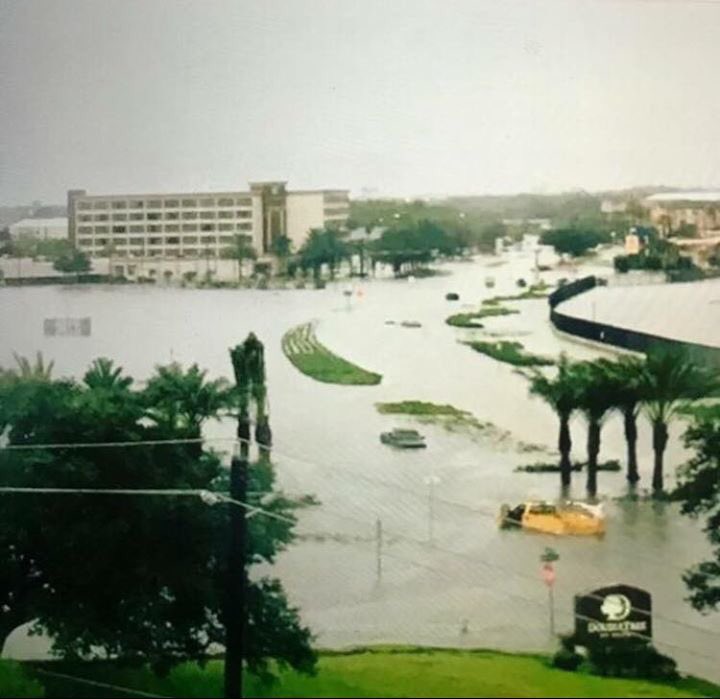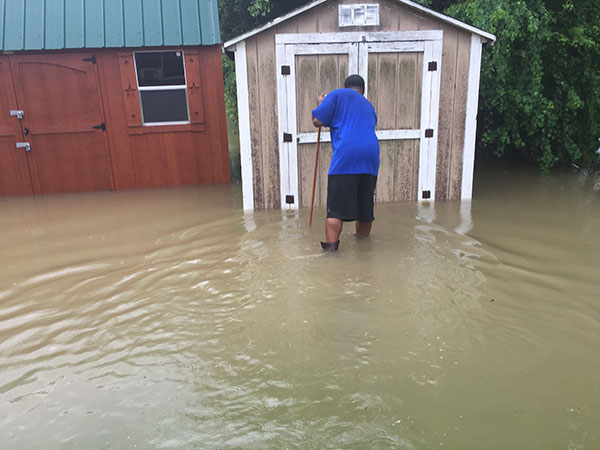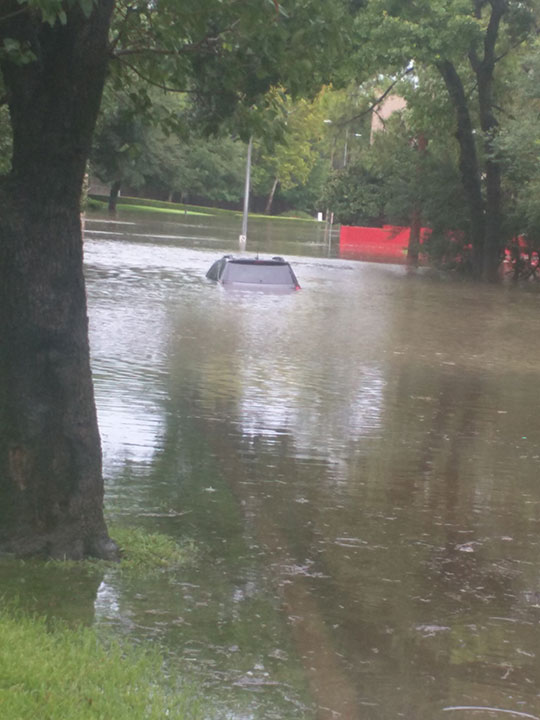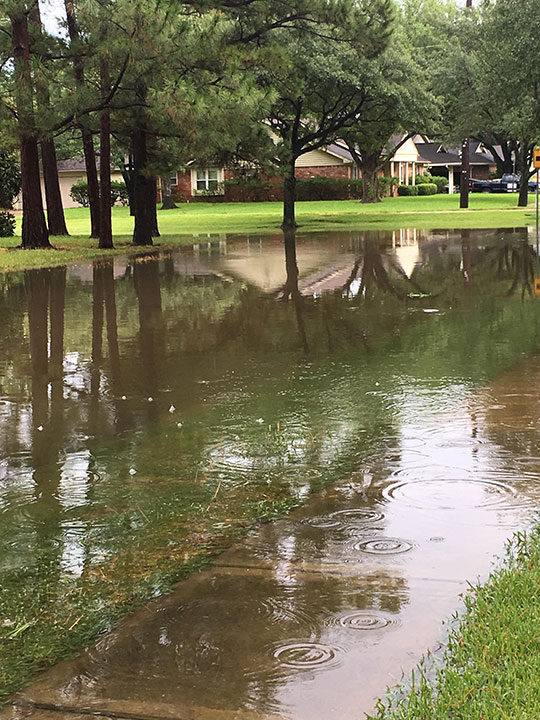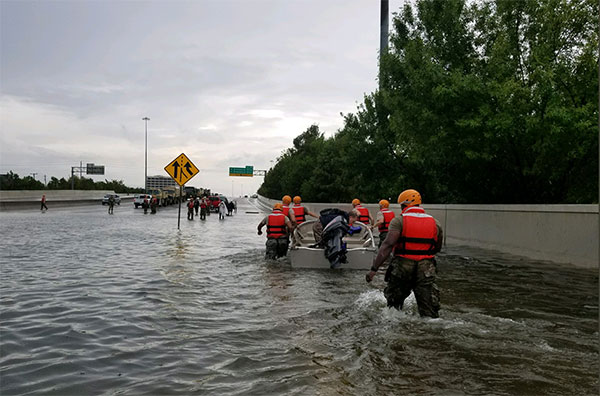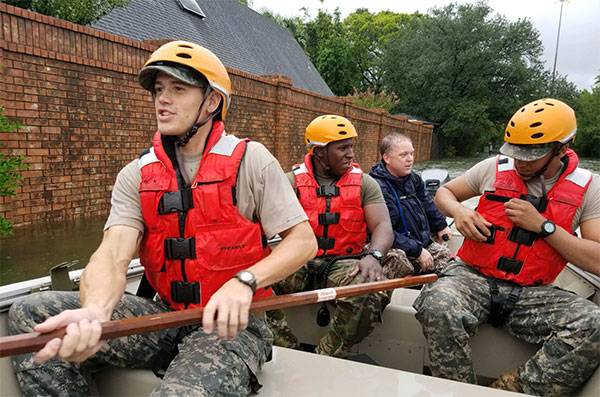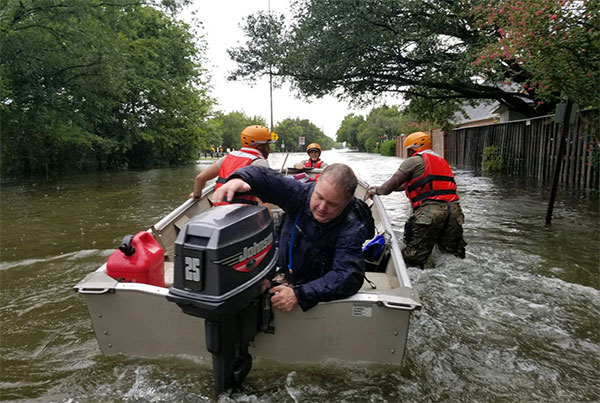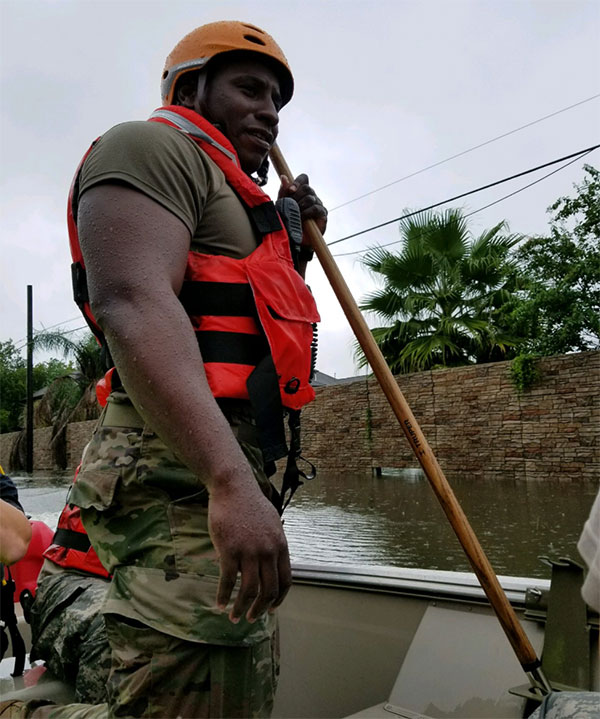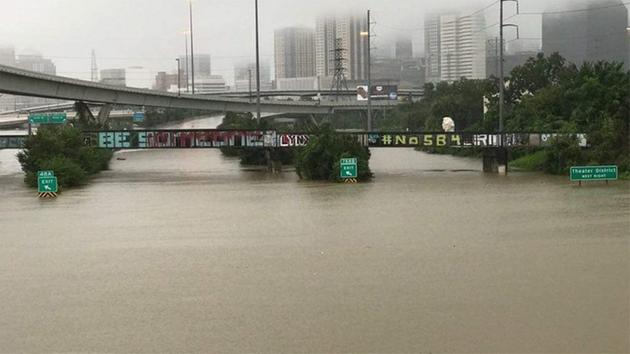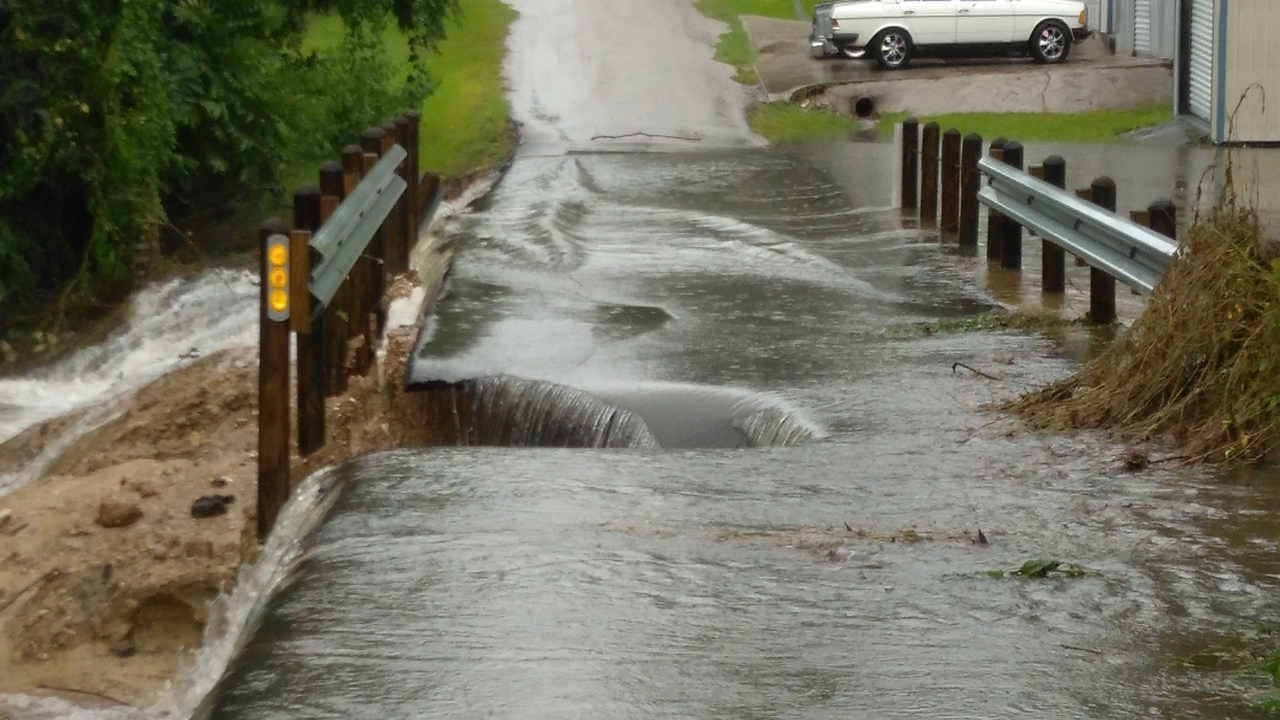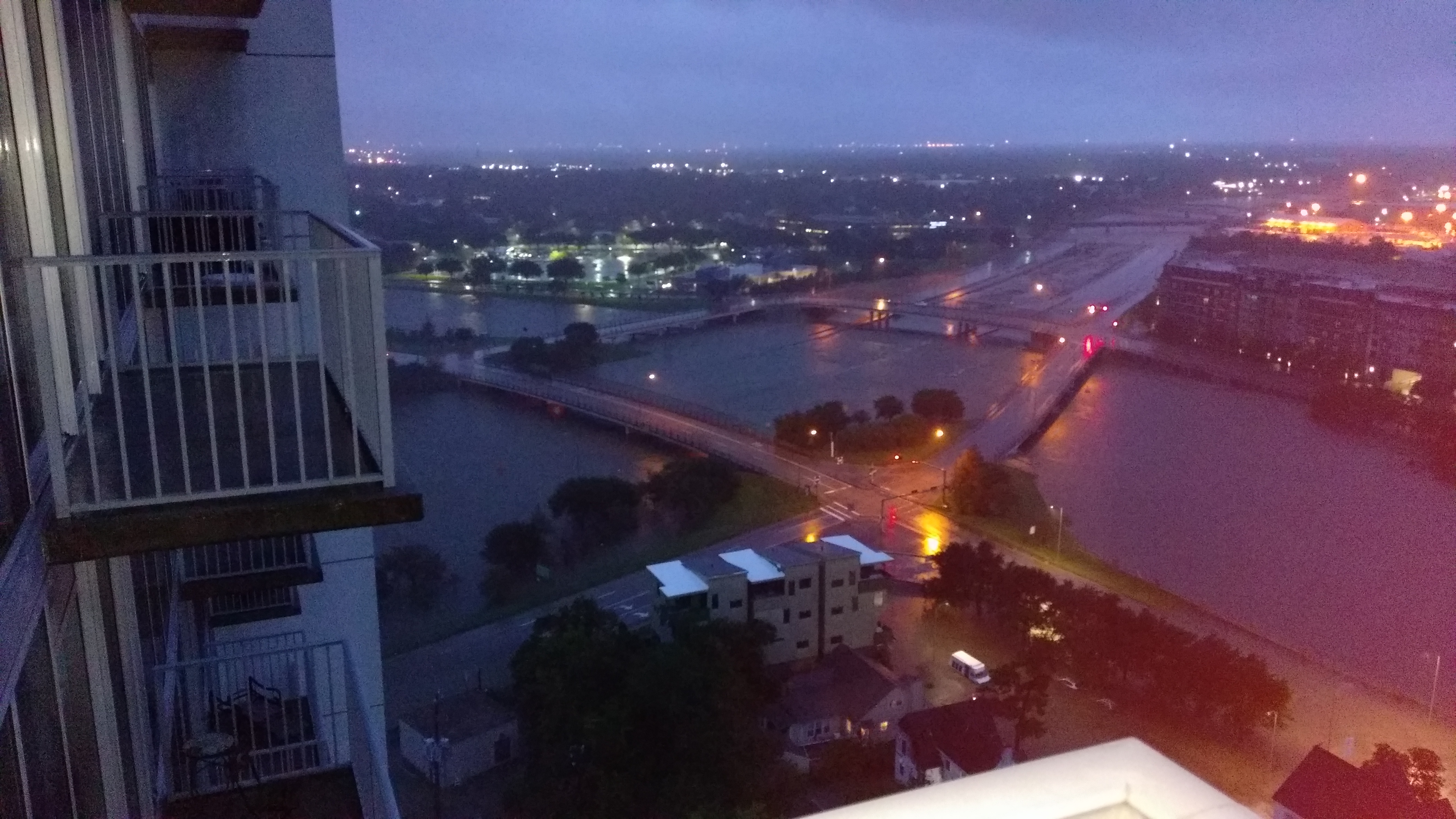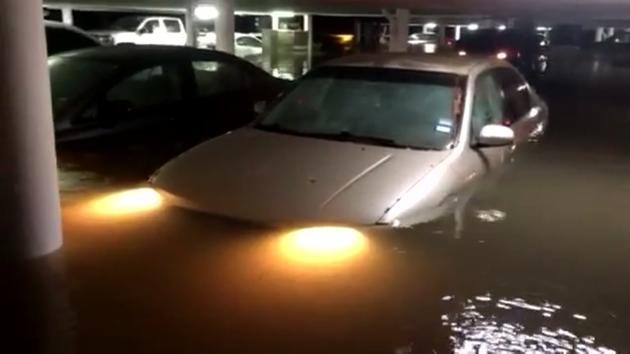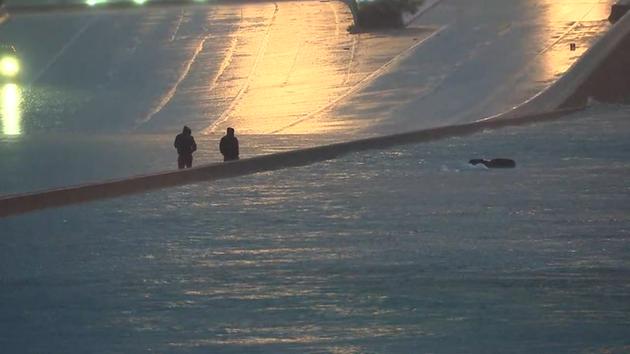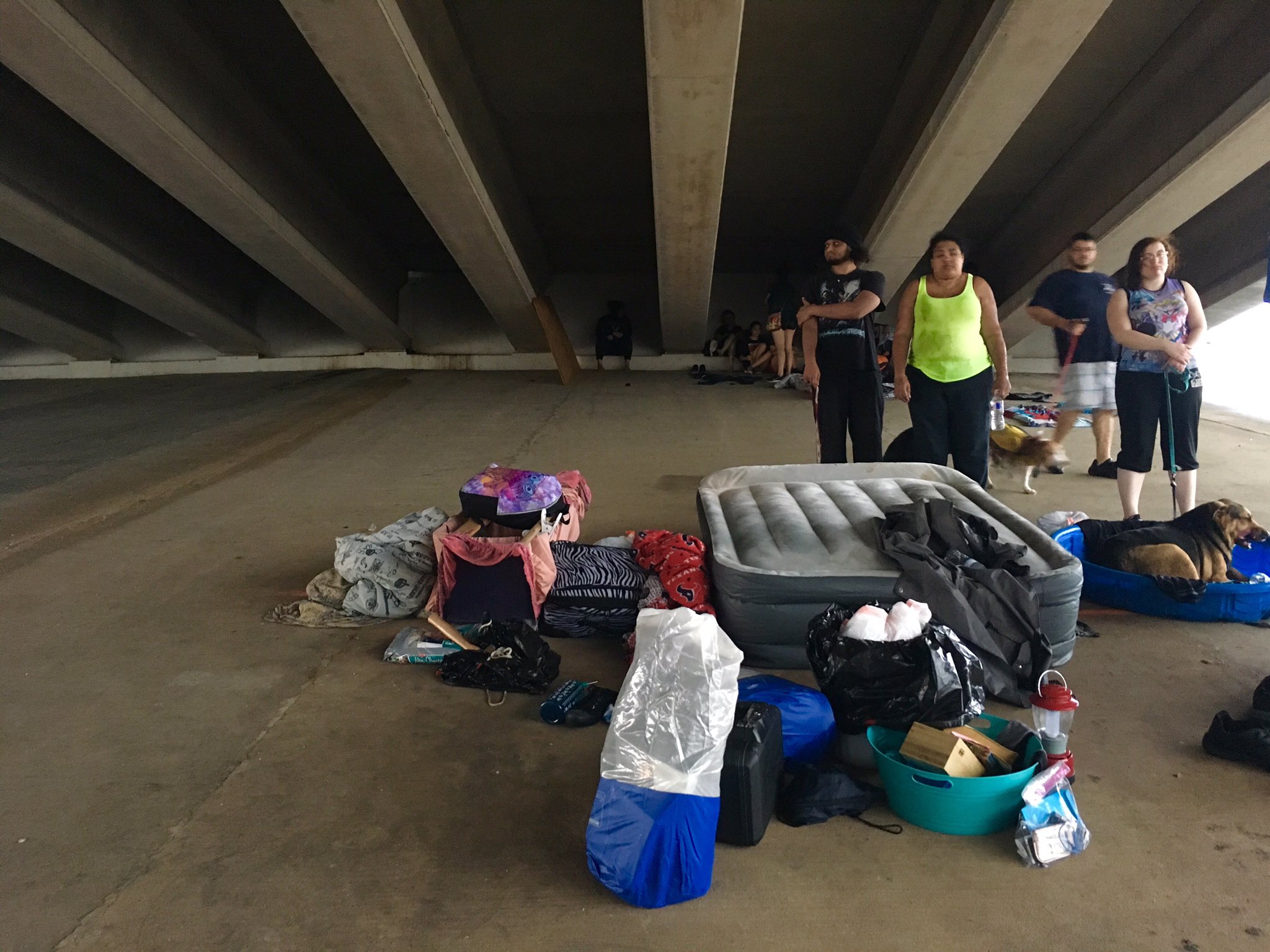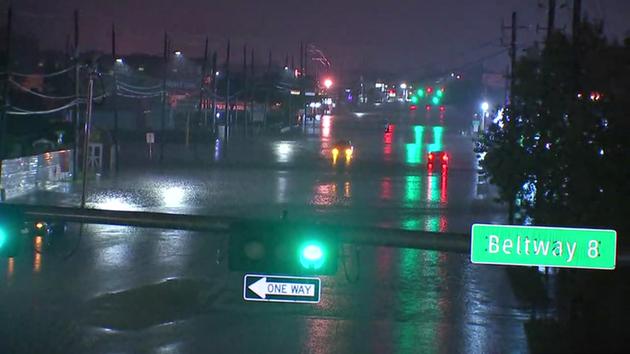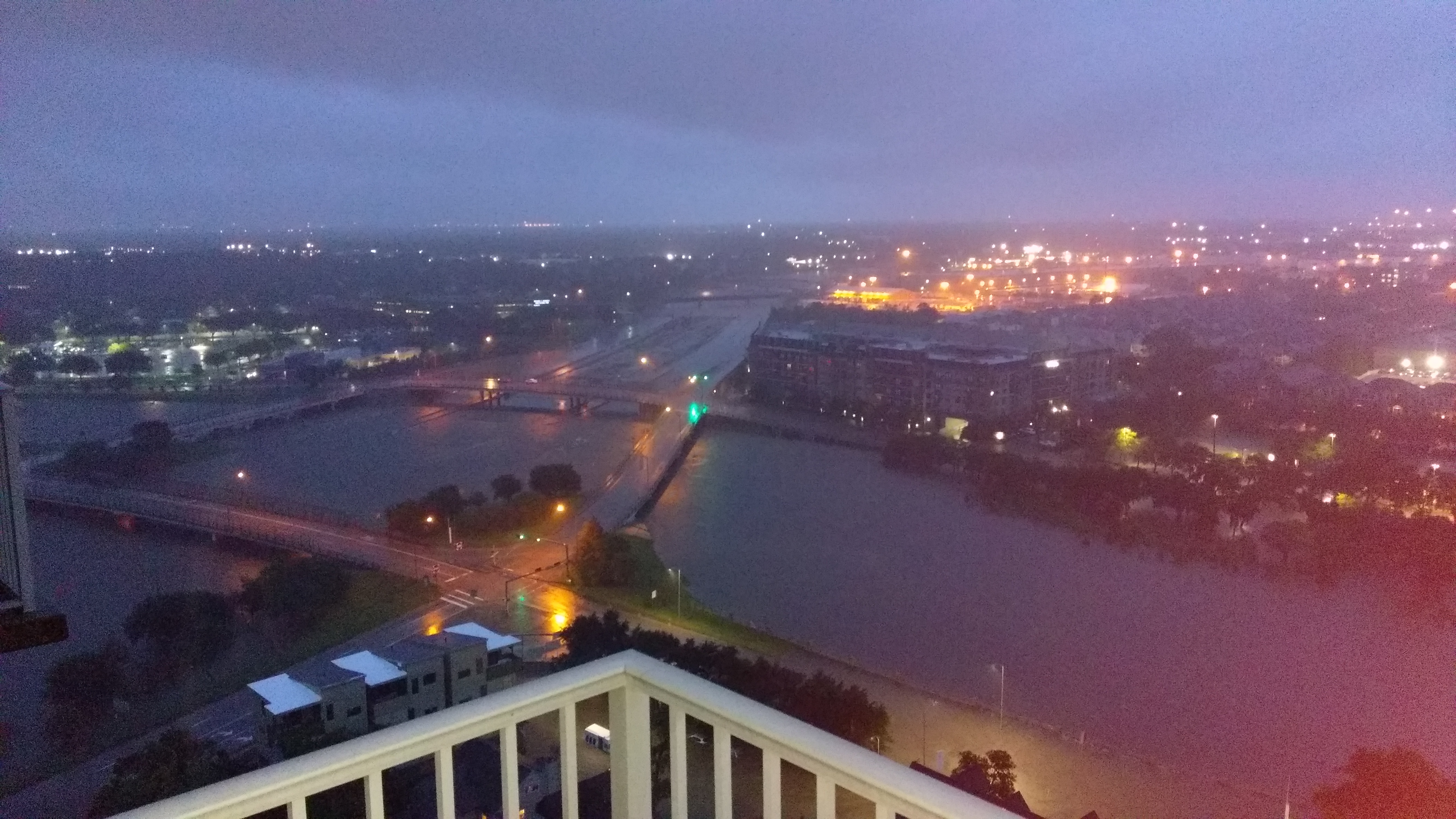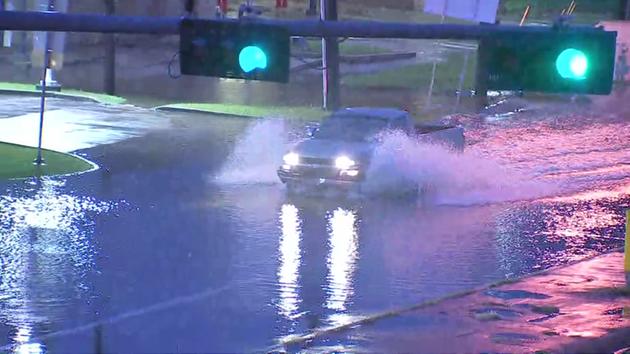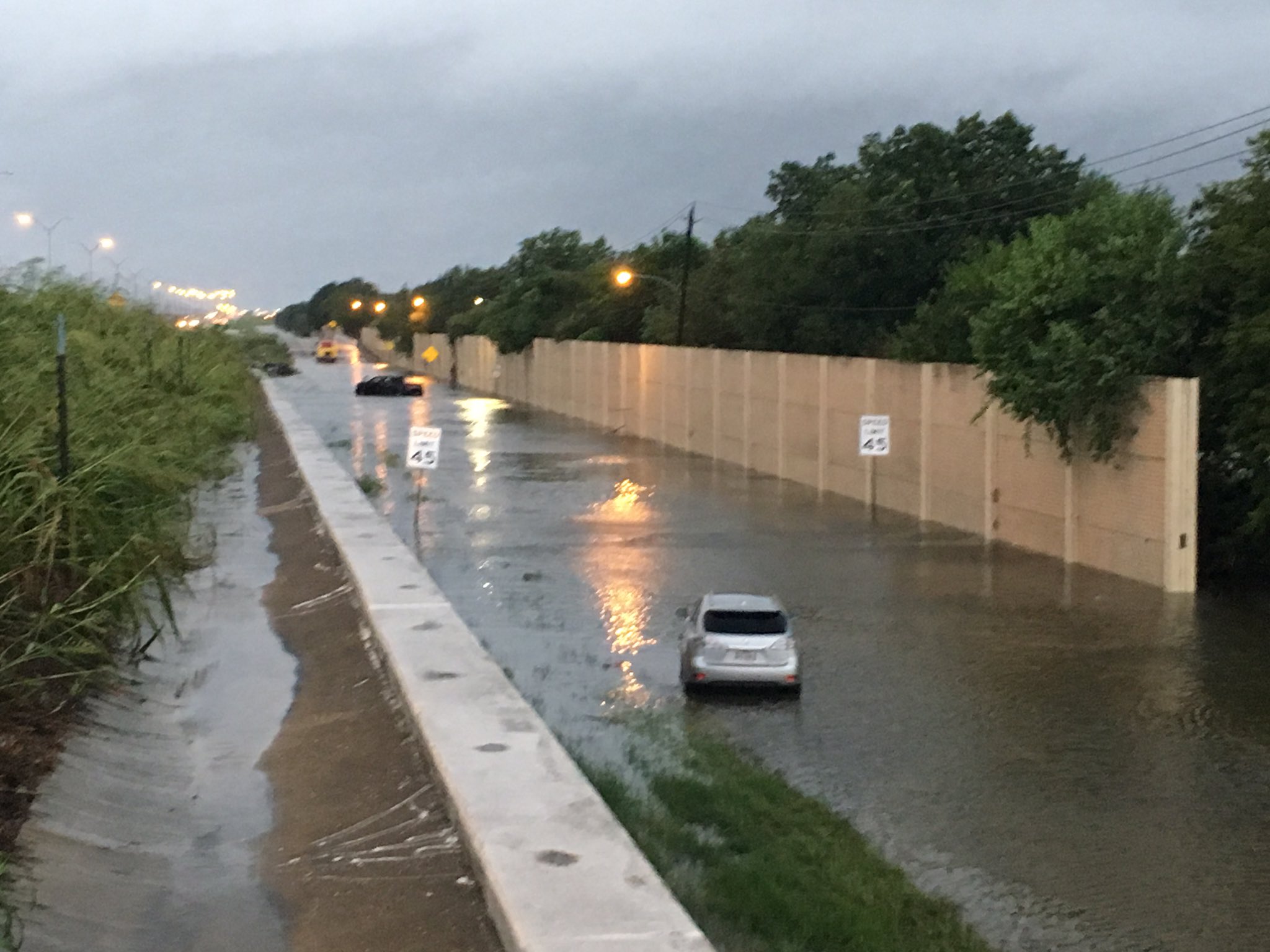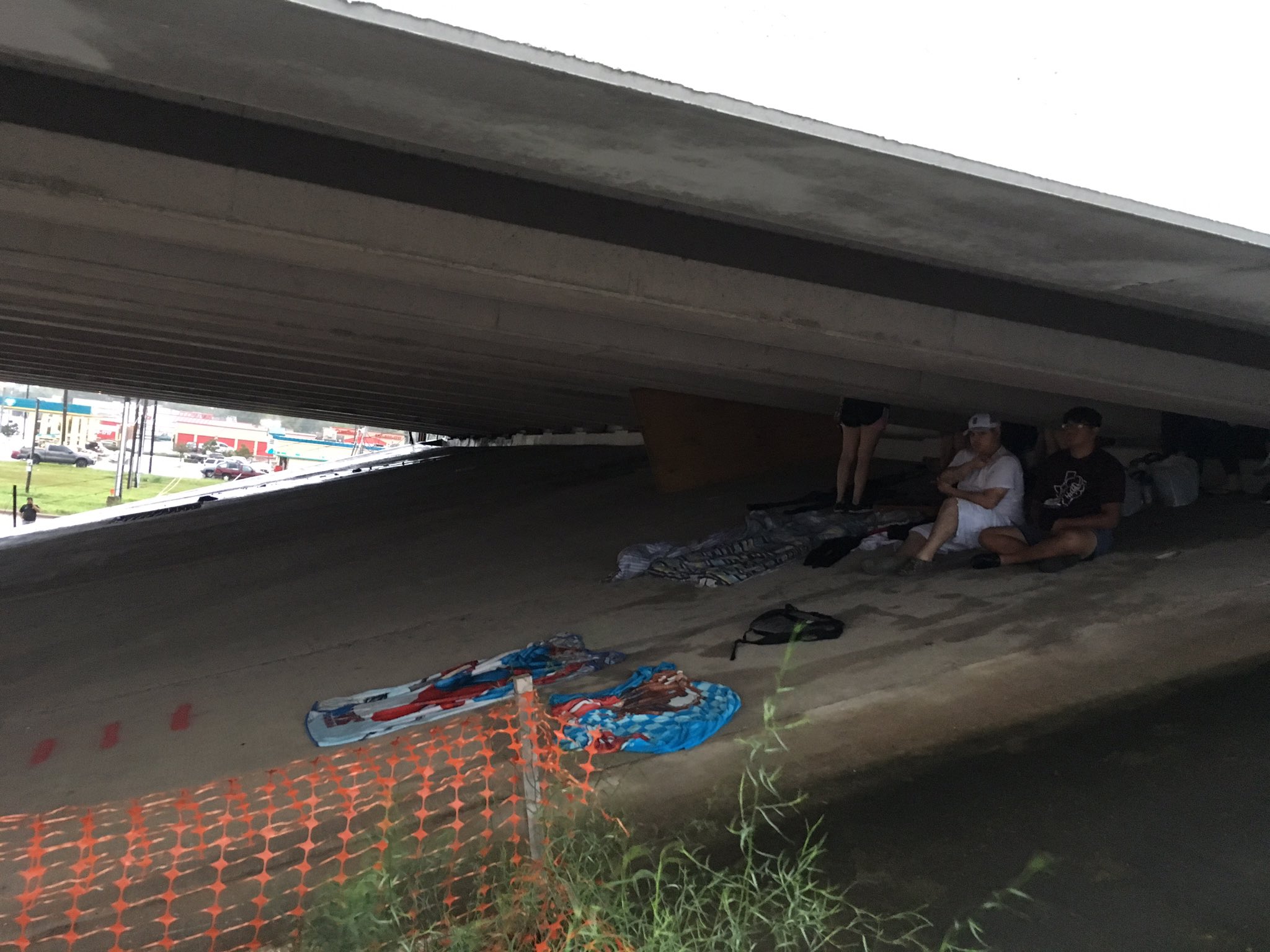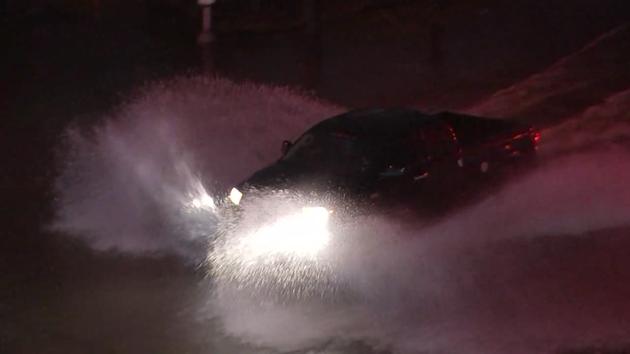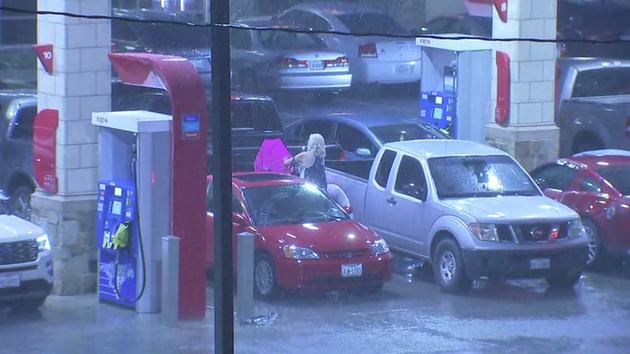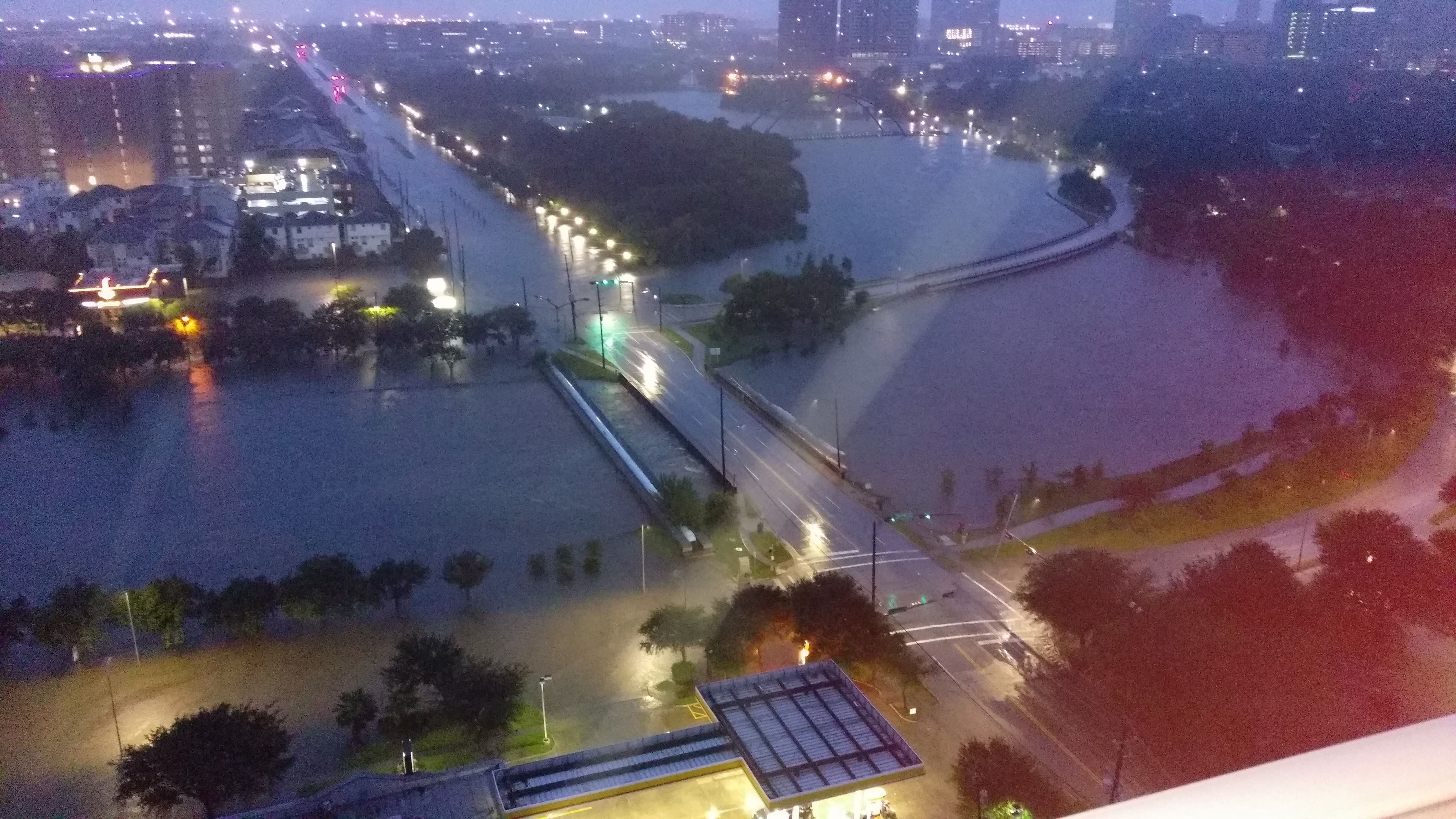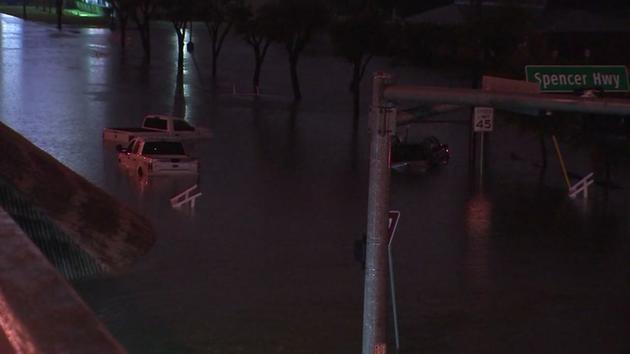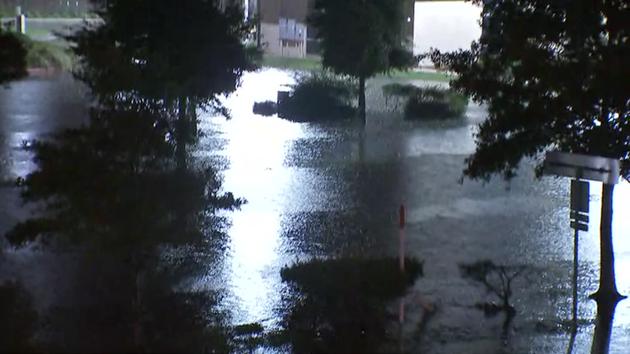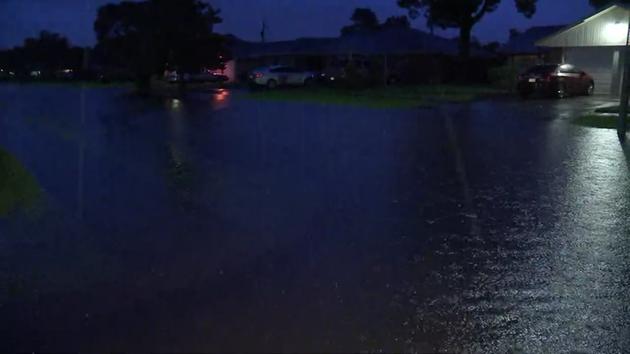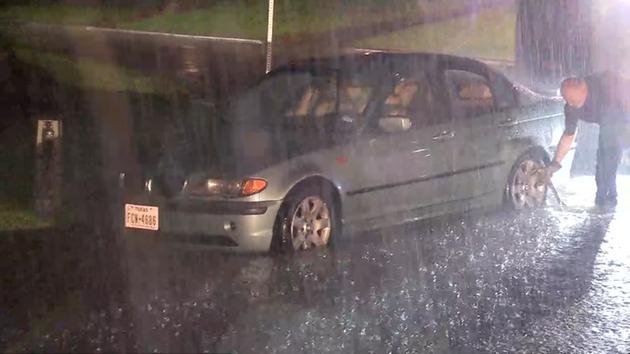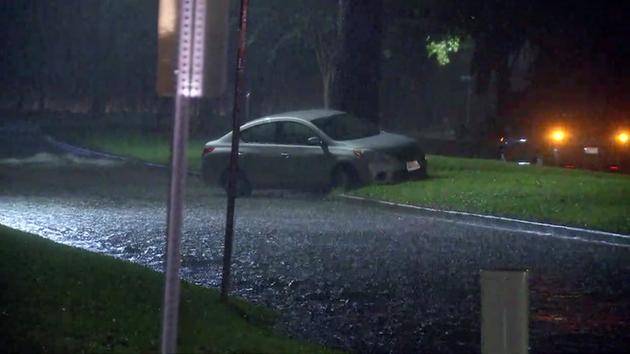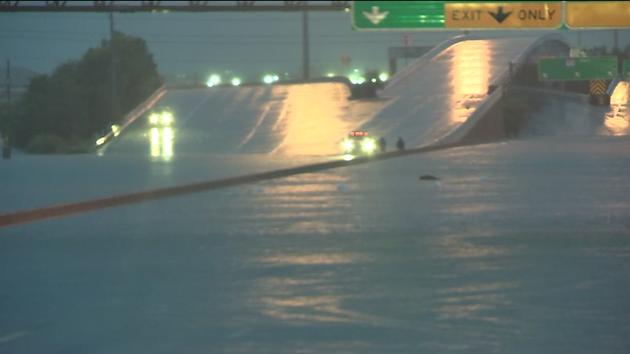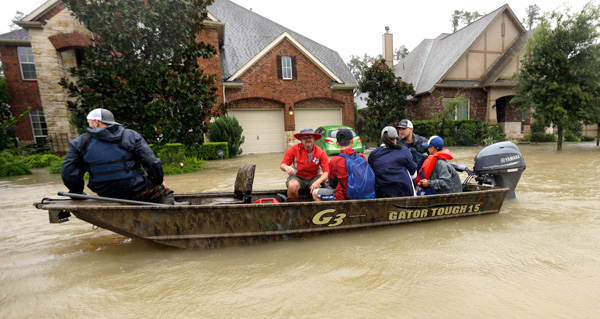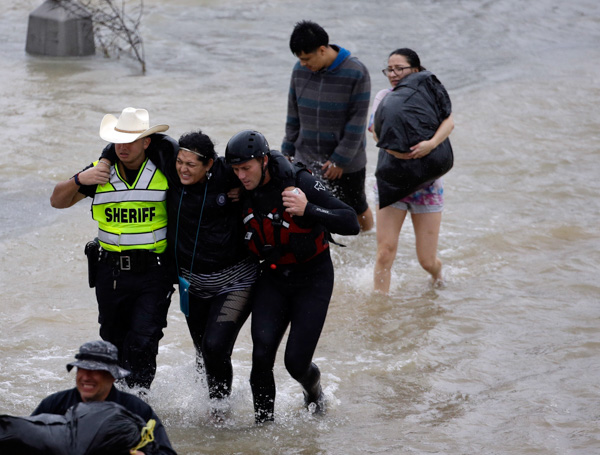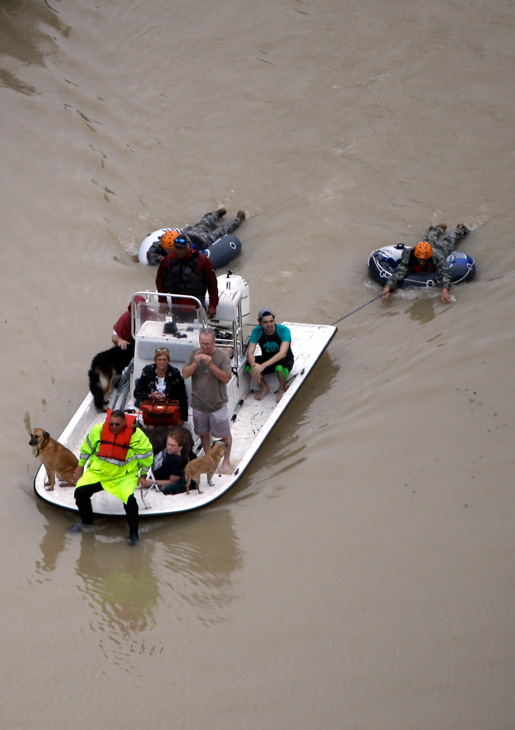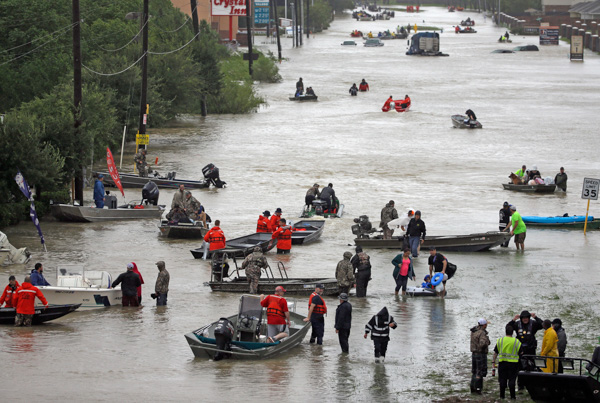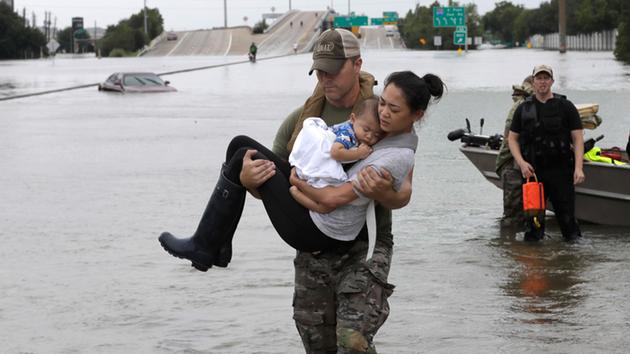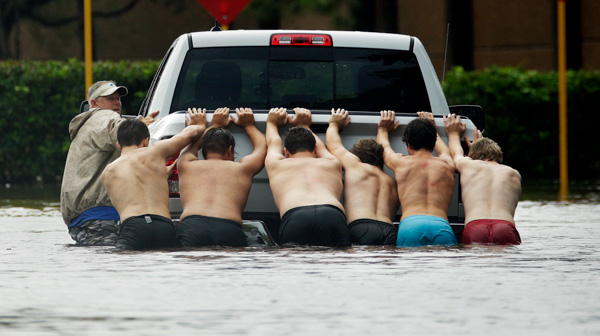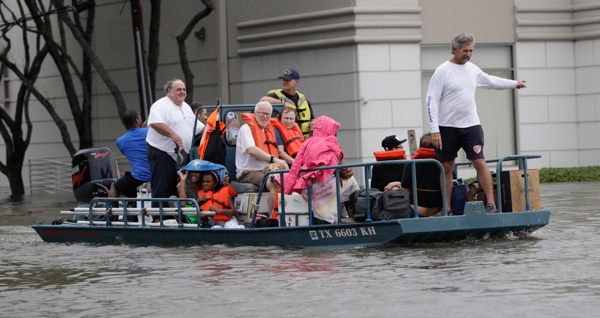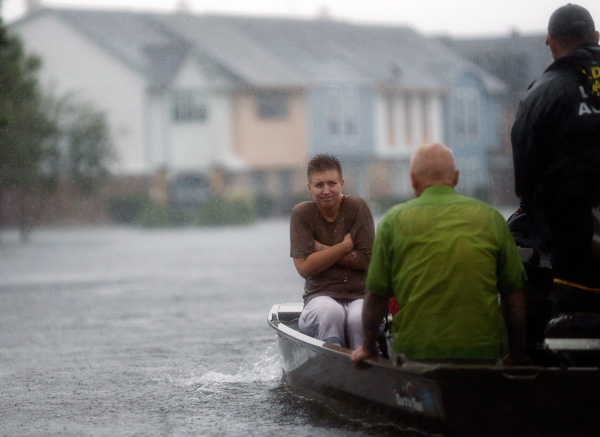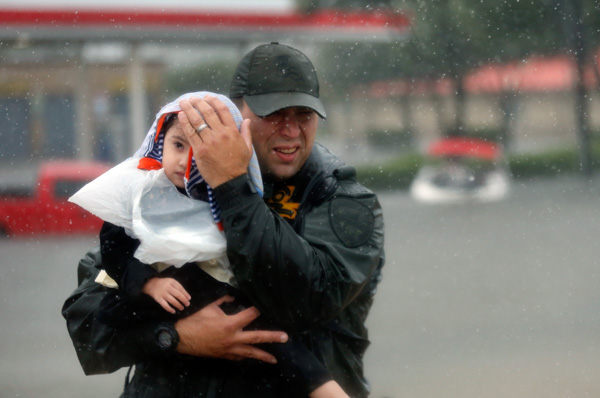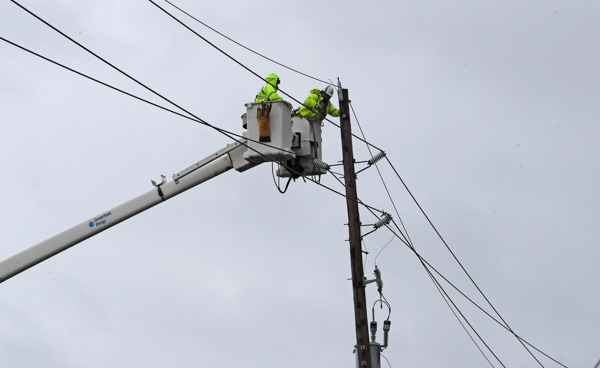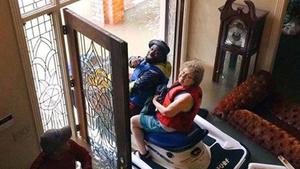
Harvey swamps evacuee shelter on Texas, Louisiana border
Normaan Merchant, and Jan Lozano
A sodden Texas coastal community was becoming increasingly isolated Wednesday, as Harvey-fed rains flooded most major roadways leading out of the city and swamped a shelter for those displaced by the storm that ravaged the Houston area.
WATCH LIVE COVERAGE FROM KTRK-TV IN HOUSTON
Jefferson County sheriff's deputy Marcus McLellan said he wasn't sure where the 100 or so evacuees at the Bowers Civic Center in Port Arthur would be sent. Most of them were perched on bleacher seats to stay dry, their belongings largely stranded on the shelter floor below them under about a foot (30 centimeters) of water, he said.
"People started coming to the shelter on Monday," McLellan said. "And now it's just all the rainfall that's coming in, and there's a canal by there also that's overflowing."
PHOTOS: Historic flooding devastates the Houston area
With at least 18 people killed by Harvey and 13,000 more rescued in the Houston area and surrounding cities and counties, yet more people were still trying to escape from their inundated homes. Weakened levees were in danger of failing, even as a less-ferocious but still potent Harvey returned to shore.
PHOTOS: Heroes of Hurricane Harvey
Harvey initially made landfall as a Category 4 hurricane on Friday then lingered off the coast of Southeast Texas for five days as a tropical storm that dropped record amounts of rain on Houston, the nation's fourth largest city, and the surrounding area. It made landfall for a second time early Wednesday, coming to shore near Cameron in southwest Louisiana and bringing with it a heavy dose of rain that is forecast to spread further north as the day progresses, perhaps as far as Missouri, Tennessee and Arkansas. Some sunshine was, finally, forecast for Houston.
Authorities expected the human toll to continue to mount, both in deaths and in the tens of thousands of people made homeless by the catastrophic storm that is now the heaviest tropical downpour in U.S. history. In all, more than 17,000 people have sought refuge in Texas shelters, and that number seemed certain to increase, the American Red Cross said.
DONATE: CLICK HERE TO DONATE TO THE AMERICAN RED CROSS TO HELP THOSE AFFECTED BY HARVEY
CALL 1-800-RED CROSS OR TEXT THE WORD HARVEY TO 90999 TO MAKE $10 DONATION
Houston's largest shelter housed 10,000 of the displaced - twice its initial intended capacity - as two additional mega-shelters opened Tuesday for the overflow. Louisiana's governor offered to take in Harvey victims from Texas, and televangelist Joel Osteen opened his Houston megachurch, a 16,000-seat former arena, after critics blasted him on social media for not acting to help families displaced by the storm.
In an apparent response to scattered reports of looting, a curfew was put into effect from midnight to 5 a.m., with police saying violators would be questioned, searched and arrested.
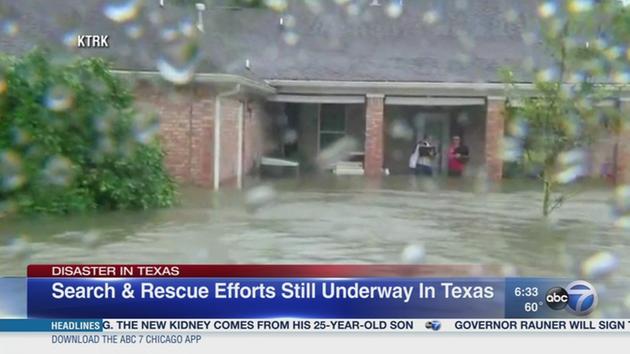
In Port Arthur, near the Louisiana border, Jefferson County Sheriff Zena Stephens told KFDM-TV that county resources were struggling to rescue Port Arthur residents because of the flooding.
Port Arthur Mayor Derrick Freeman posted on his Facebook page that the "city is underwater right now but we are coming!" He also urged residents to get to higher ground and to avoid becoming trapped in attics.
McLellan said Wednesday that the city and surrounding area is becoming increasingly isolated because Interstate 10, highways and many secondary roads are flooded. Speaking from nearby Beaumont, where he has been stuck for more than 24 hours because of the flooding, he said roads leading east into Louisiana are still open, but likely will lead evacuees right into Harvey's path.
A much-weakened Tropical Storm Harvey steered into new territory, coming ashore again early Wednesday just west of Cameron, Louisiana, with maximum sustained winds of 45 mph (70 kph), the National Hurricane Center said.
Cameron is just 45 miles (70 kilometers) east of Port Arthur.
"To get out of this area I'd have to head east toward Orange (Texas) and into Louisiana," McLellan said.
Harvey is expected to weaken, but will slog through Louisiana for much of the day before taking its downpours north. Arkansas, Tennessee and parts of Missouri are on alert for Harvey flooding in the next couple of days.
"Once we get this thing inland during the day, it's the end of the beginning," said National Hurricane Center meteorologist Dennis Feltgen. "Texas is going to get a chance to finally dry out as this system pulls out."
But Feltgen cautioned: "We're not done with this. There's still an awful lot of real estate and a lot of people who are going to feel the impacts of the storm."
Still, the reprieve from the rain in Houston was welcome.
Eugene Rideaux, a 42-year-old mechanic who showed up at Osteen's Lakewood Church to sort donations for evacuees, said he had not been able to work or do much since the storm first hit, so he was eager to get out of his dark house and help.
"It's been so dark for days now, I'm just ready to see some light. Some sunshine. I'm tired of the darkness," Rideaux said. "But it's a tough city, and we're going to make this into a positive and come together."
The city has asked the Federal Emergency Management Agency for more supplies, including cots and food, for an additional 10,000 people, said Houston Mayor Sylvester Turner, who hoped to get the supplies no later than Wednesday.
Four days after the storm ravaged the Texas coastline as a Category 4 hurricane, authorities and family members reported at least 18 deaths from Harvey. They include a former football and track coach in suburban Houston and a woman who died after she and her young daughter were swept into a rain-swollen drainage canal. Two Beaumont, Texas, police officers and two fire-rescue divers spotted the woman floating with the child, who was holding onto her mother.
Authorities acknowledge that fatalities from Harvey could soar once the floodwaters start to recede from one of America's largest metropolitan centers.
A pair of 70-year-old reservoir dams that protect downtown Houston and a levee in a suburban subdivision began overflowing Tuesday, adding to the rising floodwaters.
Engineers began releasing water from the Addicks and Barker reservoirs Monday to ease the strain on the dams. But the releases were not enough to relieve the pressure after the relentless downpours, Army Corps of Engineers officials said. Both reservoirs are at record highs.
The release of the water means that more homes and streets will flood, and some homes will be inundated for up to a month, said Jeff Linder of the Harris County Flood Control District.
Officials in Houston were also keeping an eye on infrastructure such as bridges, roads and pipelines that are in the path of the floodwaters.
Water in the Houston Ship Channel, which serves the Port of Houston and Houston's petrochemical complex, is at levels never seen before, Linder said.
The San Jacinto River, which empties into the channel, has pipelines, roads and bridges not designed for the current deluge, Linder said, and the chance of infrastructure failures will increase the "longer we keep the water in place."
Among the worries is debris coming down the river and crashing into structures and the possibility that pipelines in the riverbed will be scoured by swift currents. In 1994, a pipeline ruptured on the river near Interstate 10 and caught fire.
After five consecutive days of rain, Harvey set a new continental U.S. record for rainfall for a tropical system.
The rains in Cedar Bayou, near Mont Belvieu, Texas, totaled 51.88 inches (132 centimeters) as of Tuesday afternoon. That's a record for both Texas and the continental United States, but it does not quite surpass the 52 inches (133 centimeters) from Tropical Cyclone Hiki in Kauai, Hawaii, in 1950, before Hawaii became a state
SEE VIDEO

